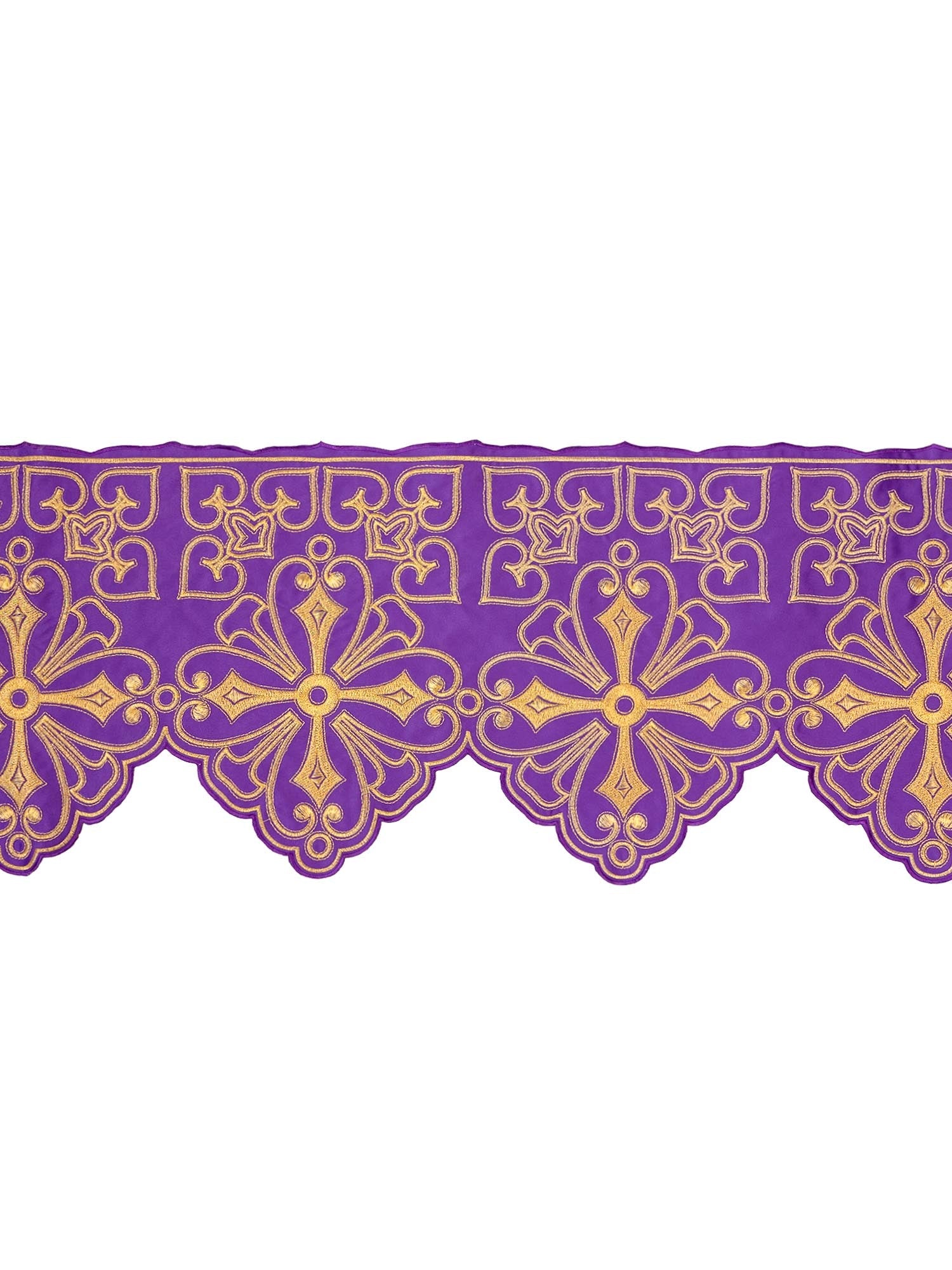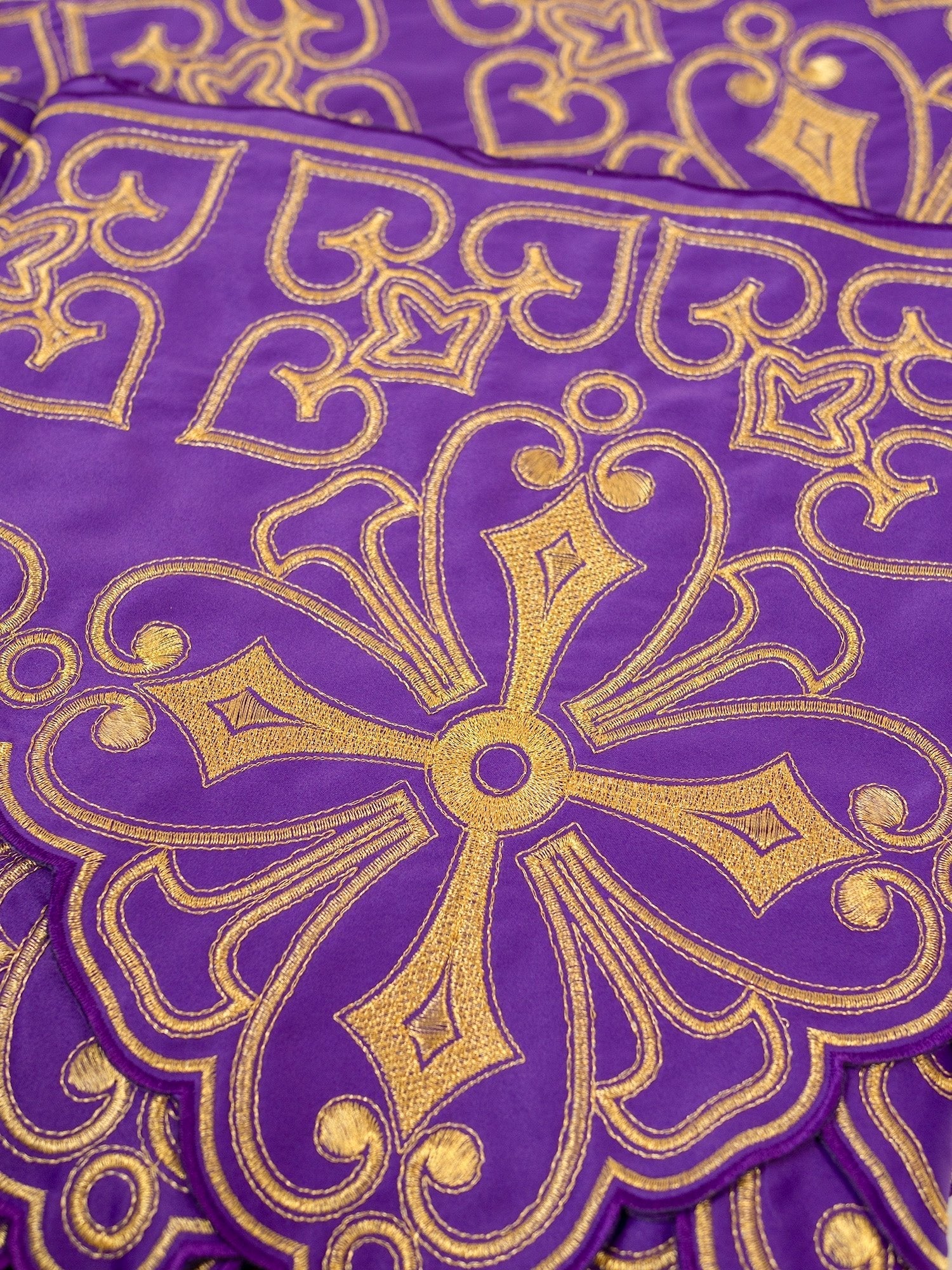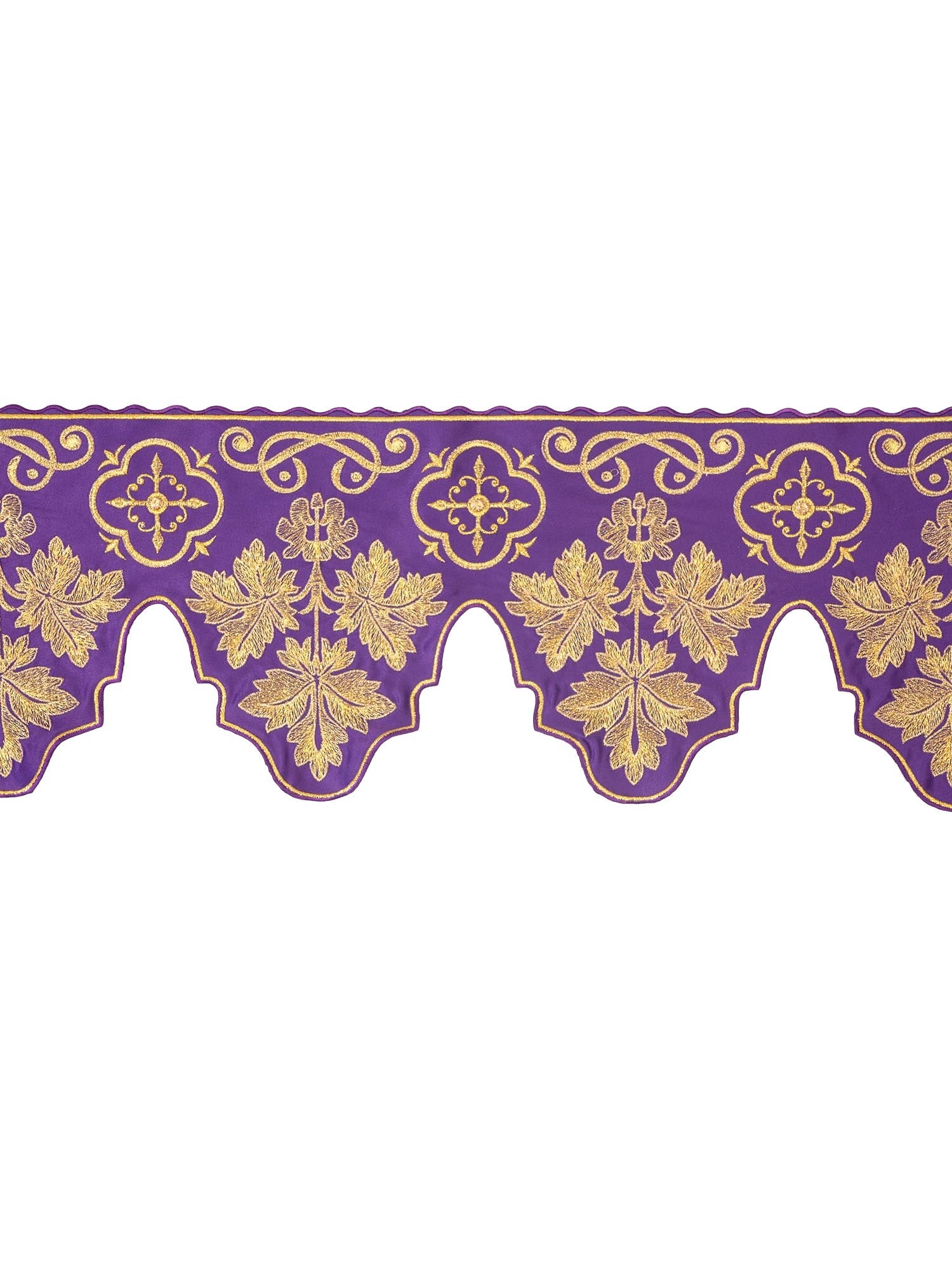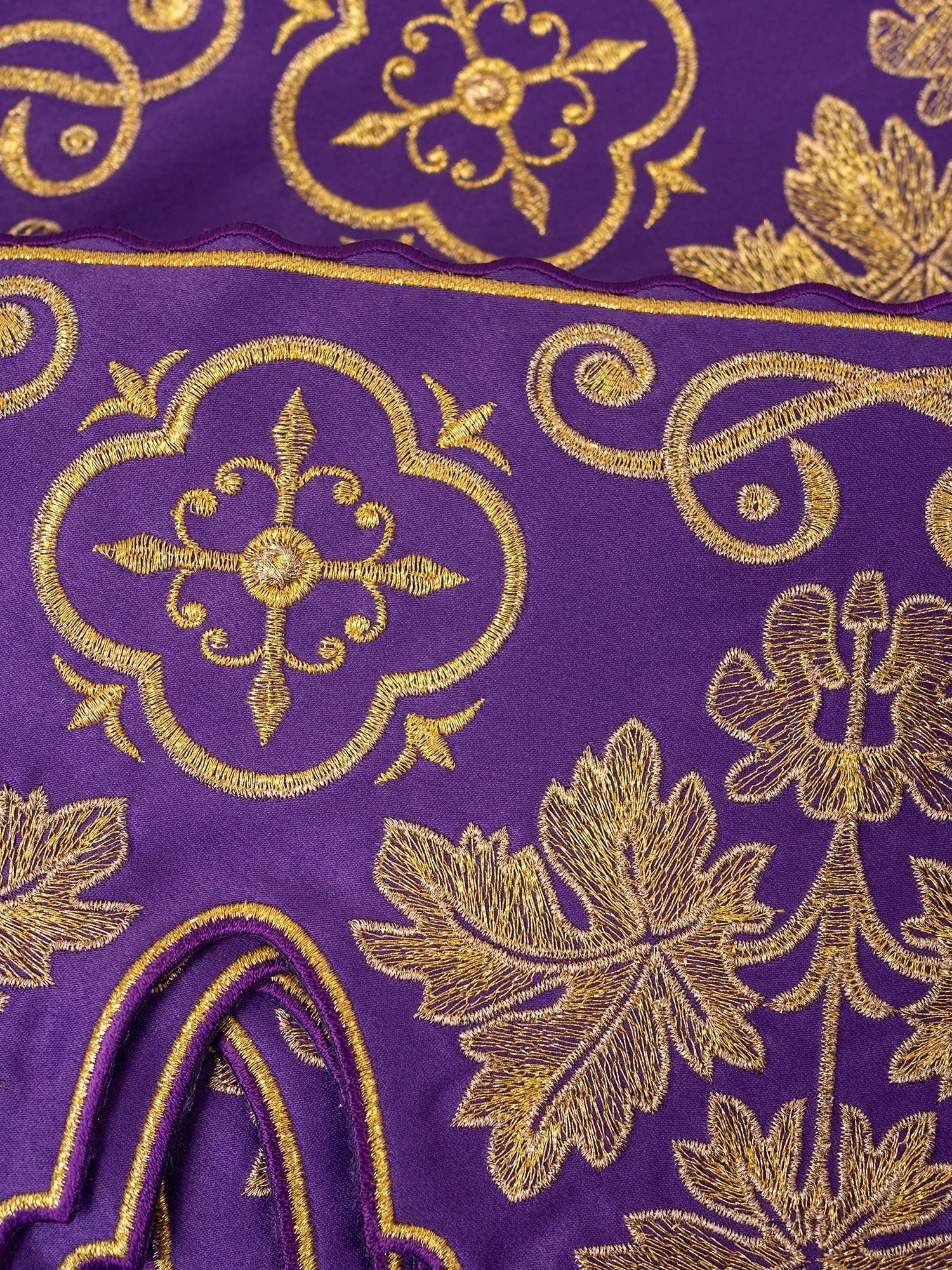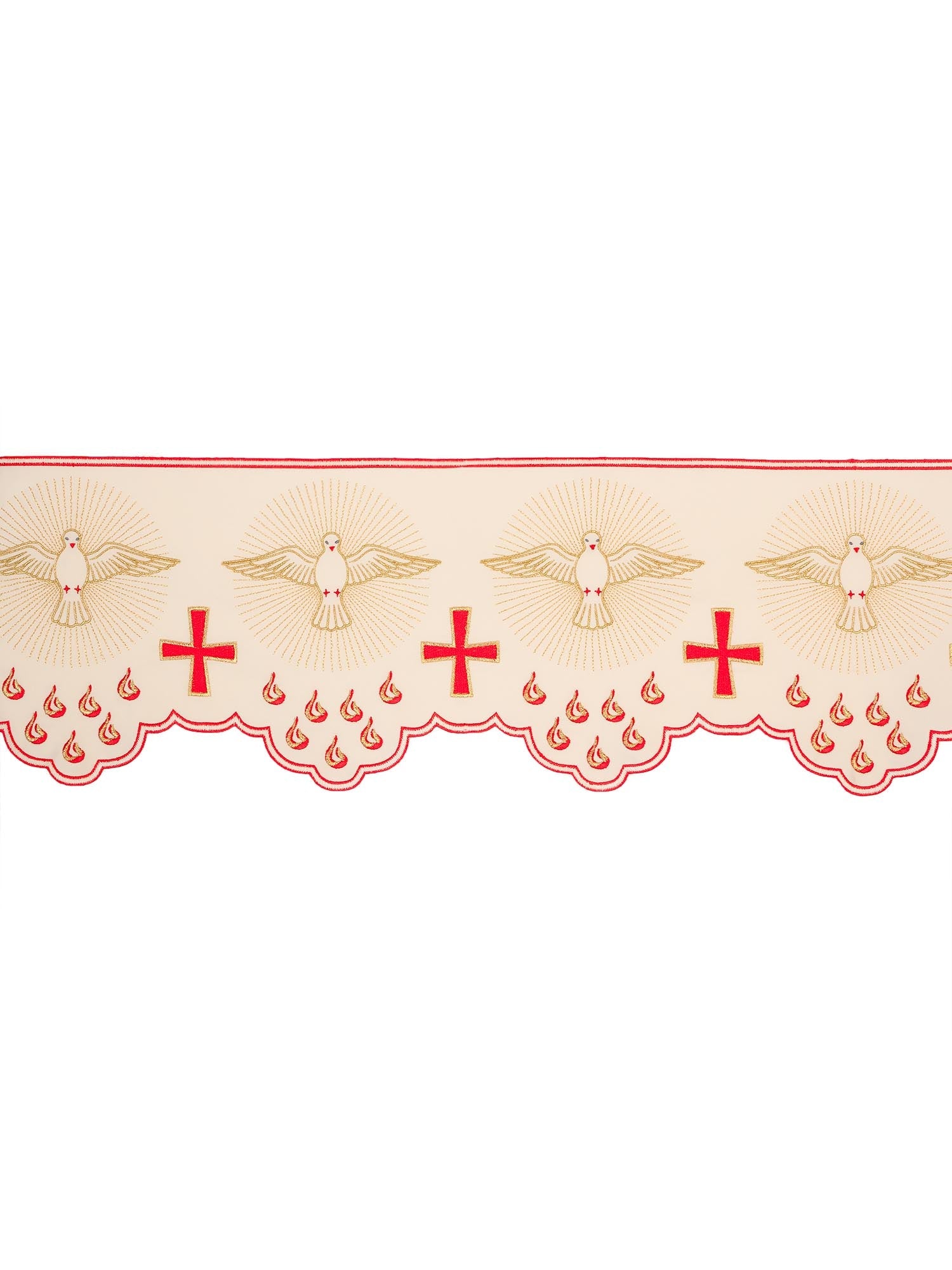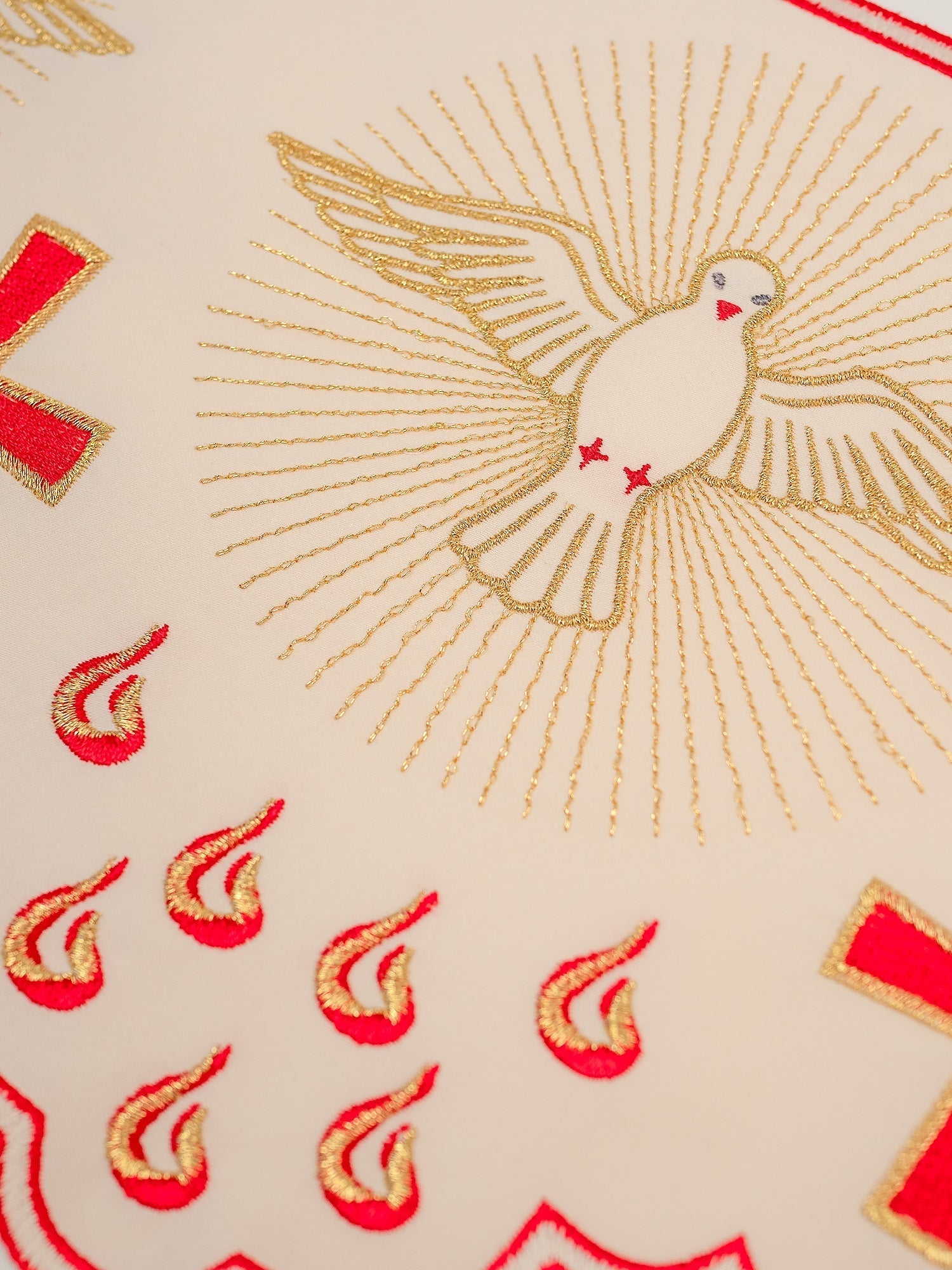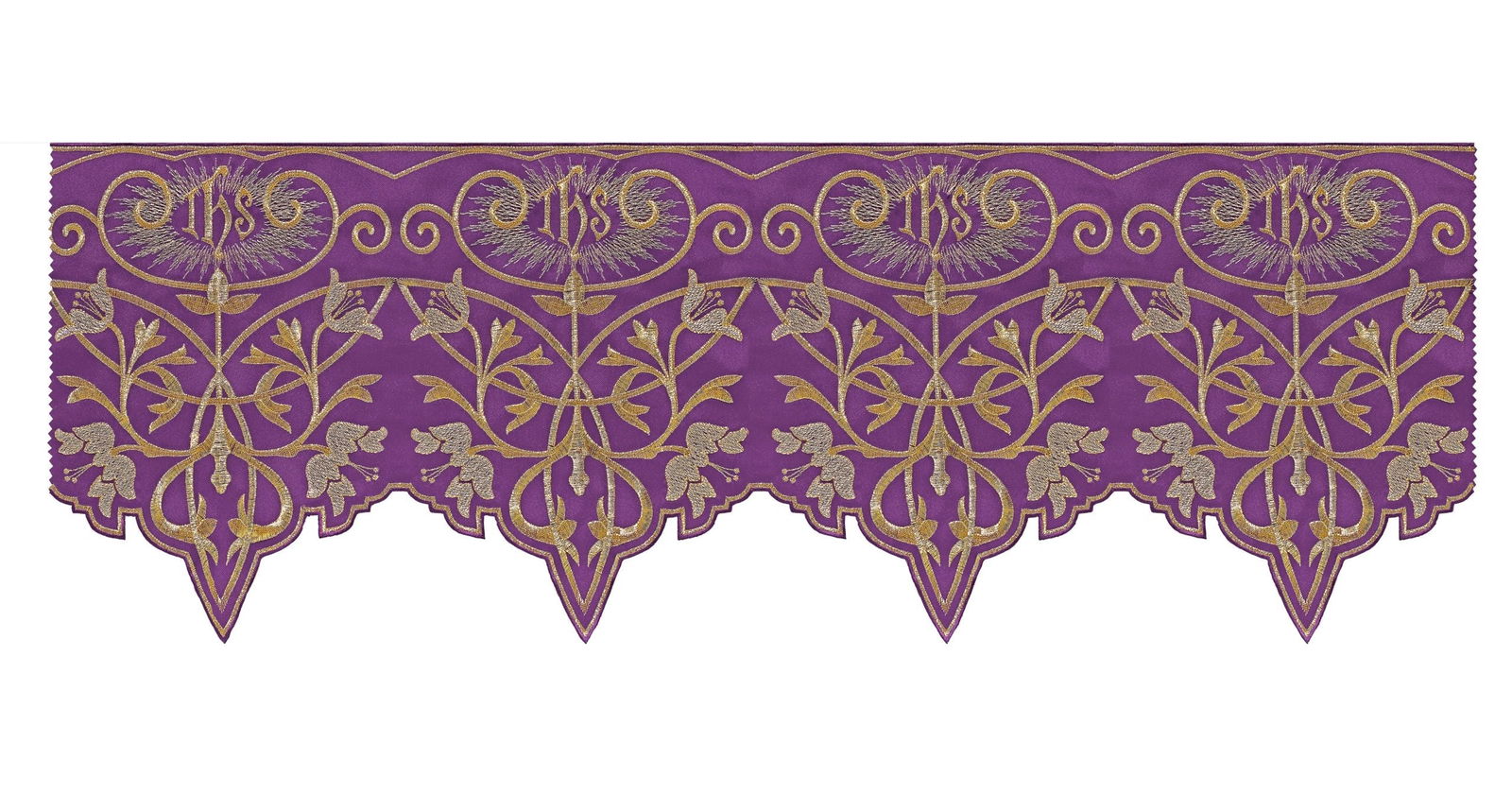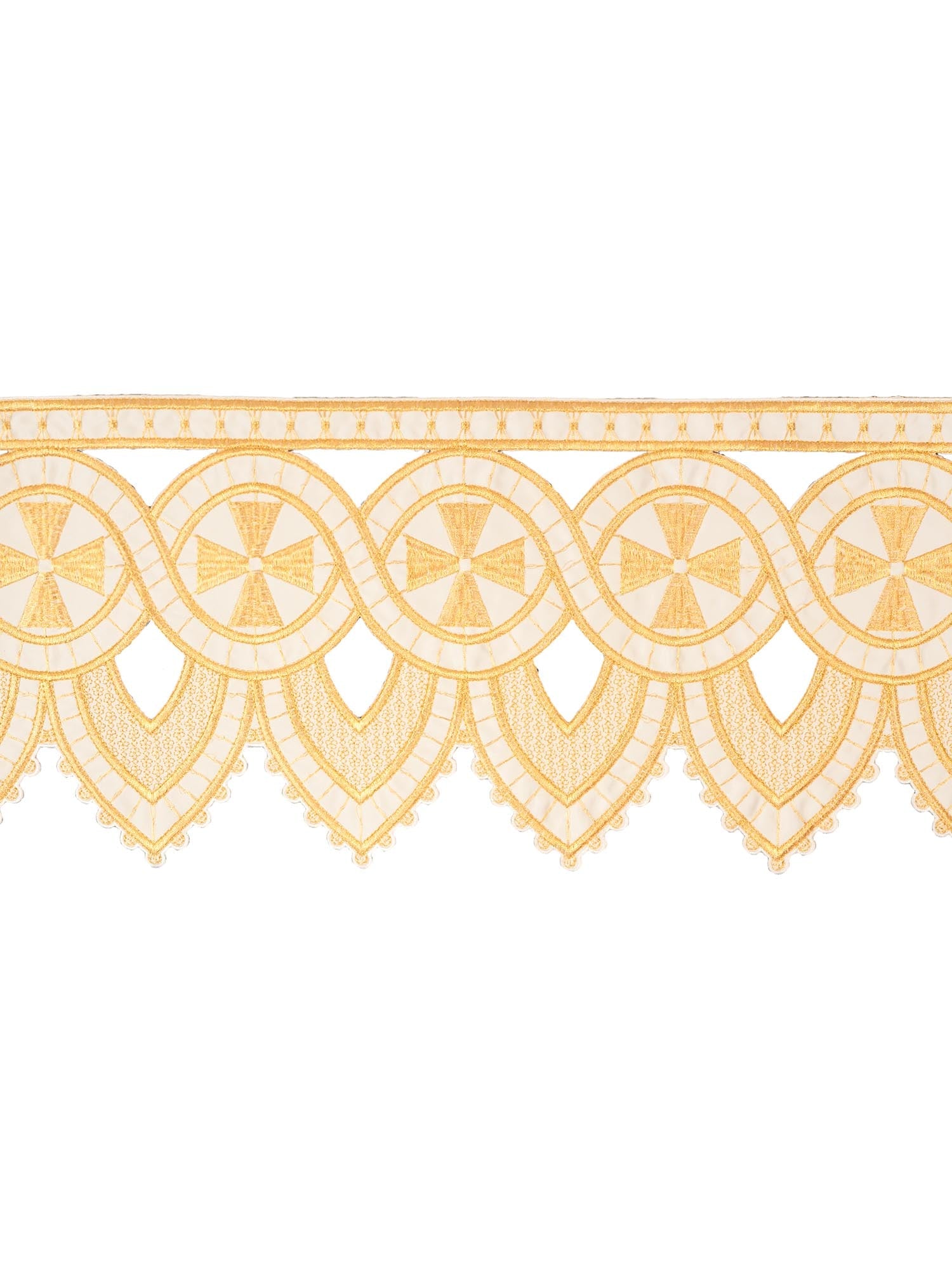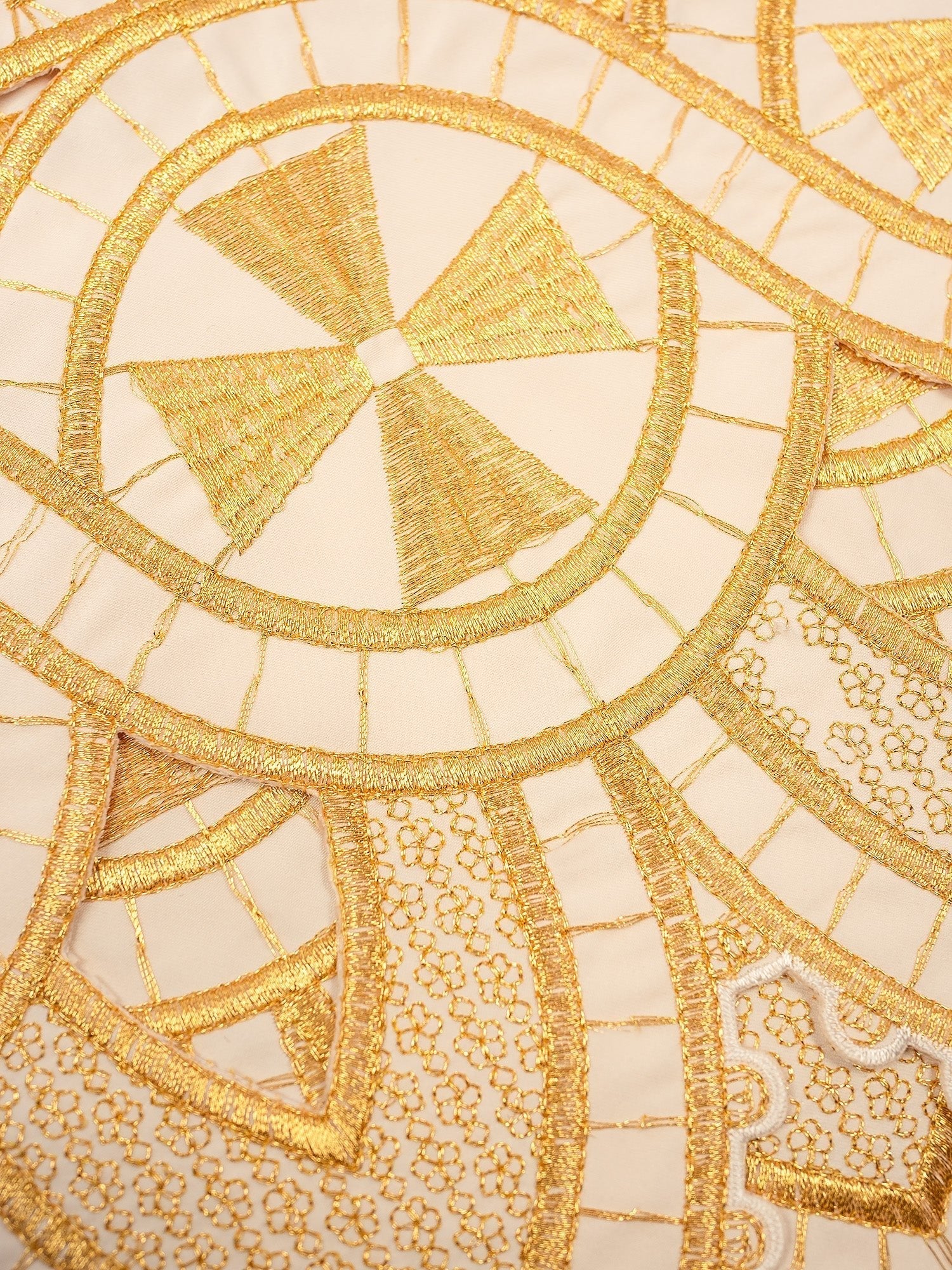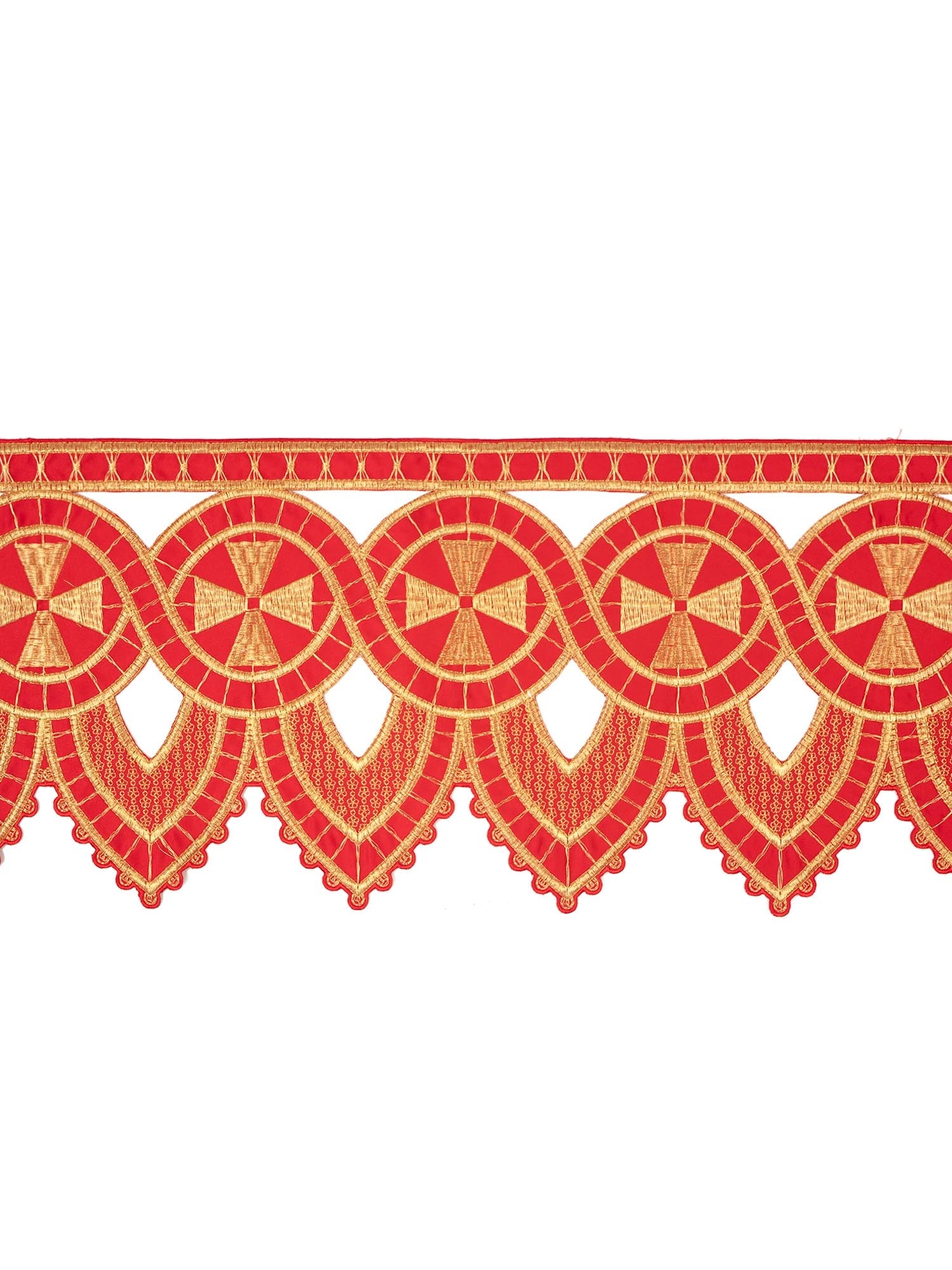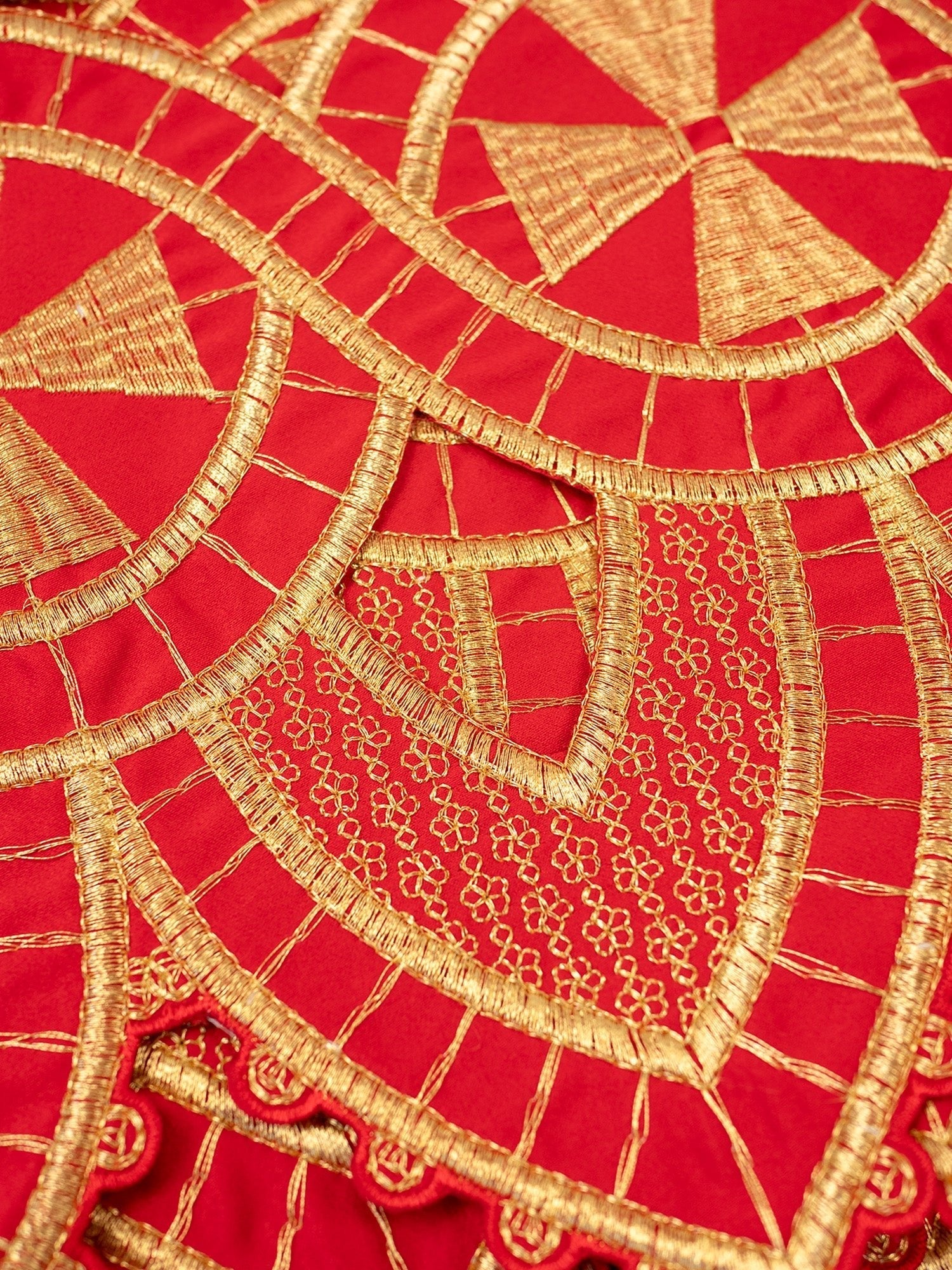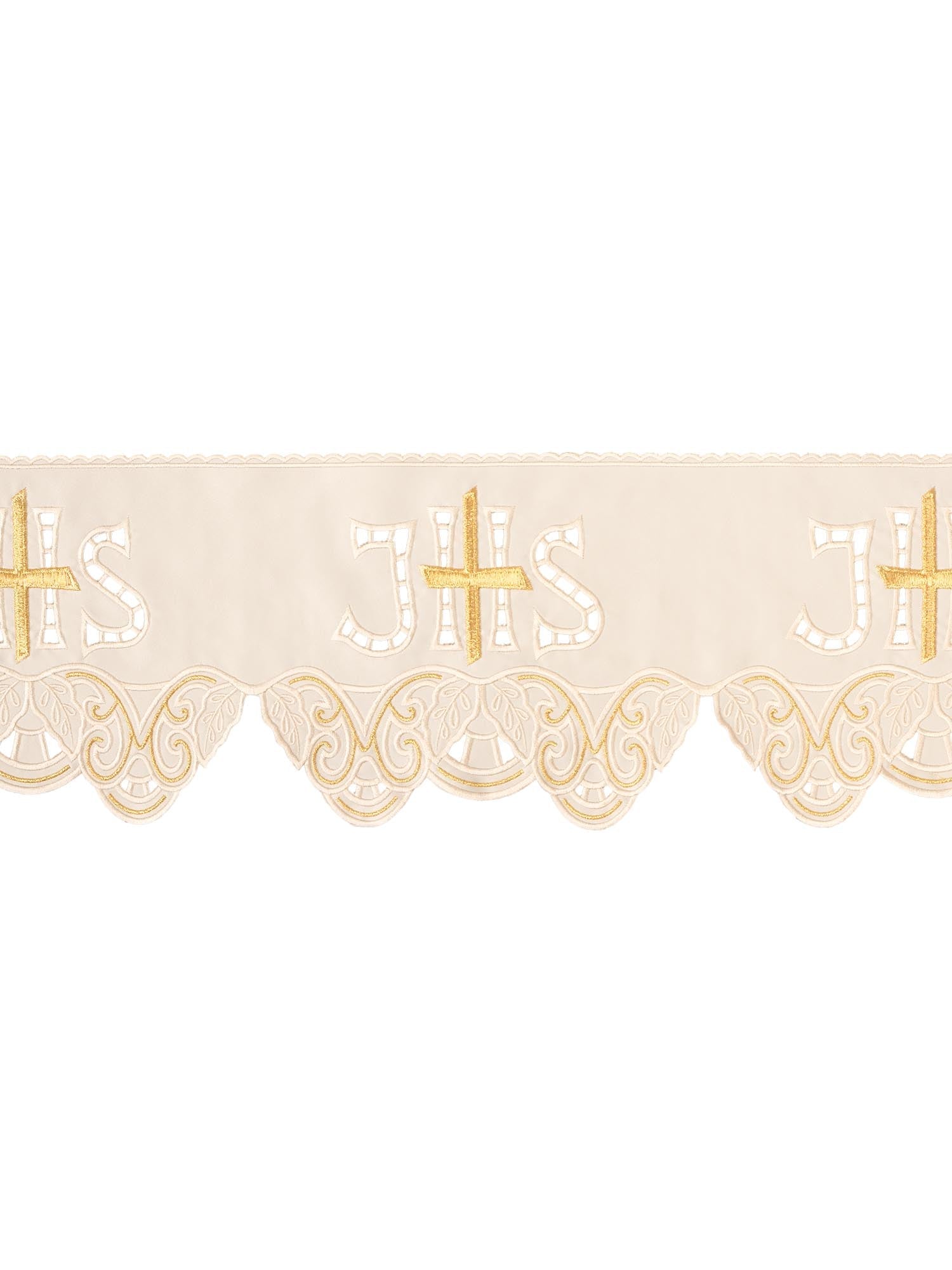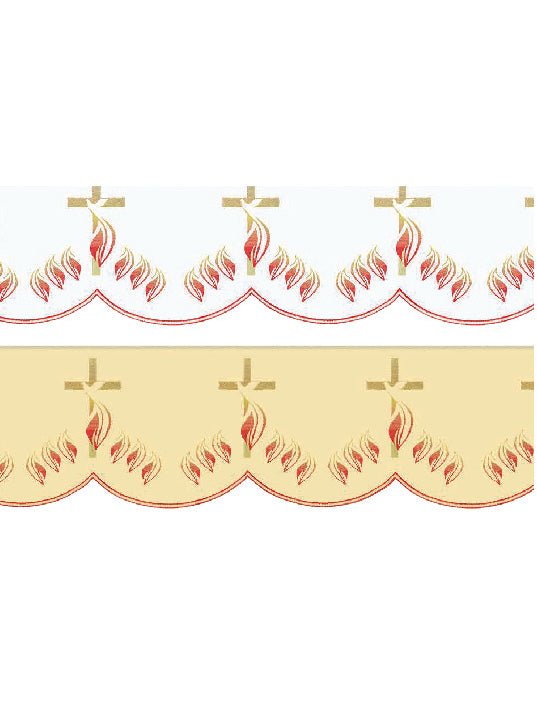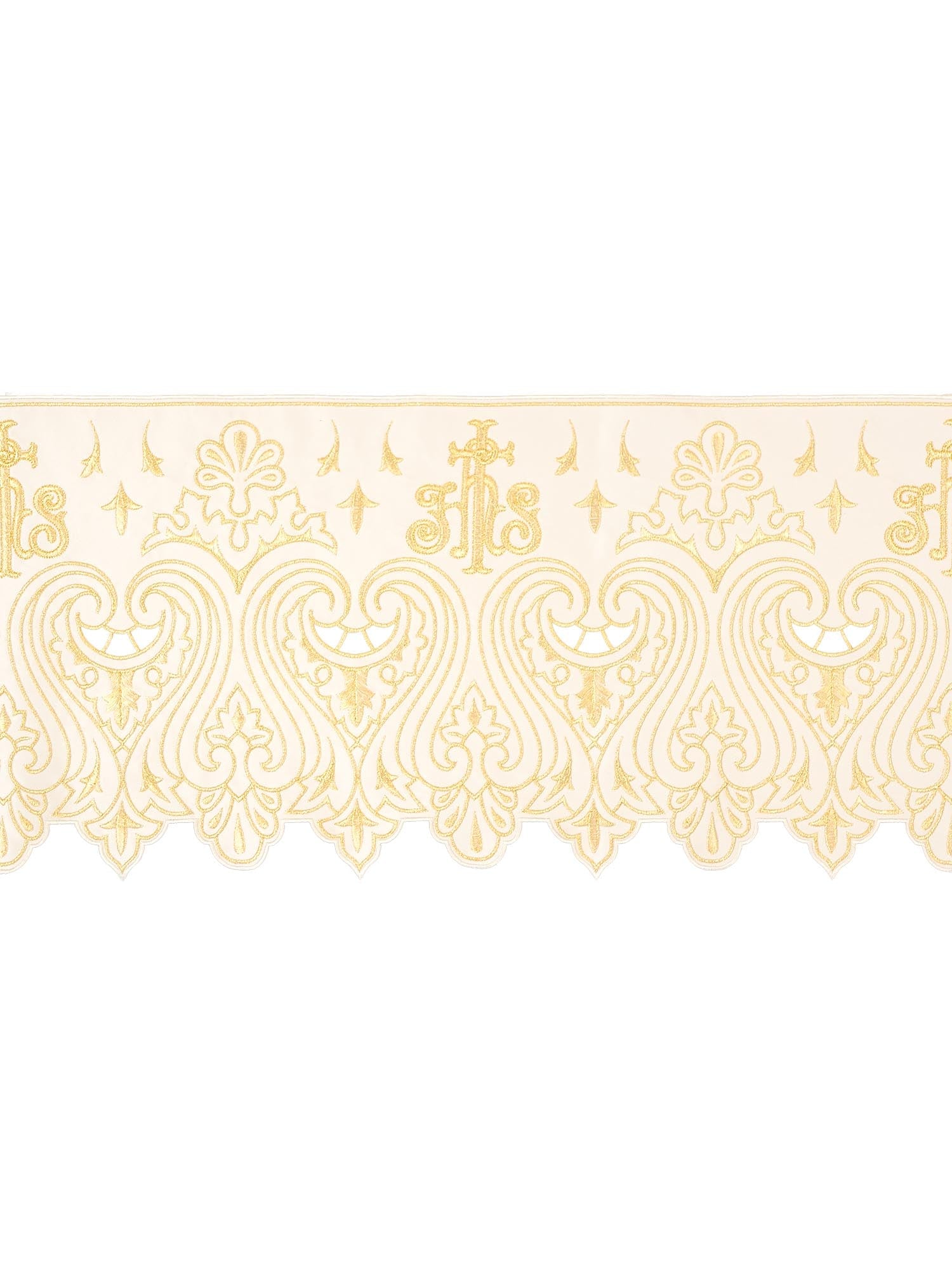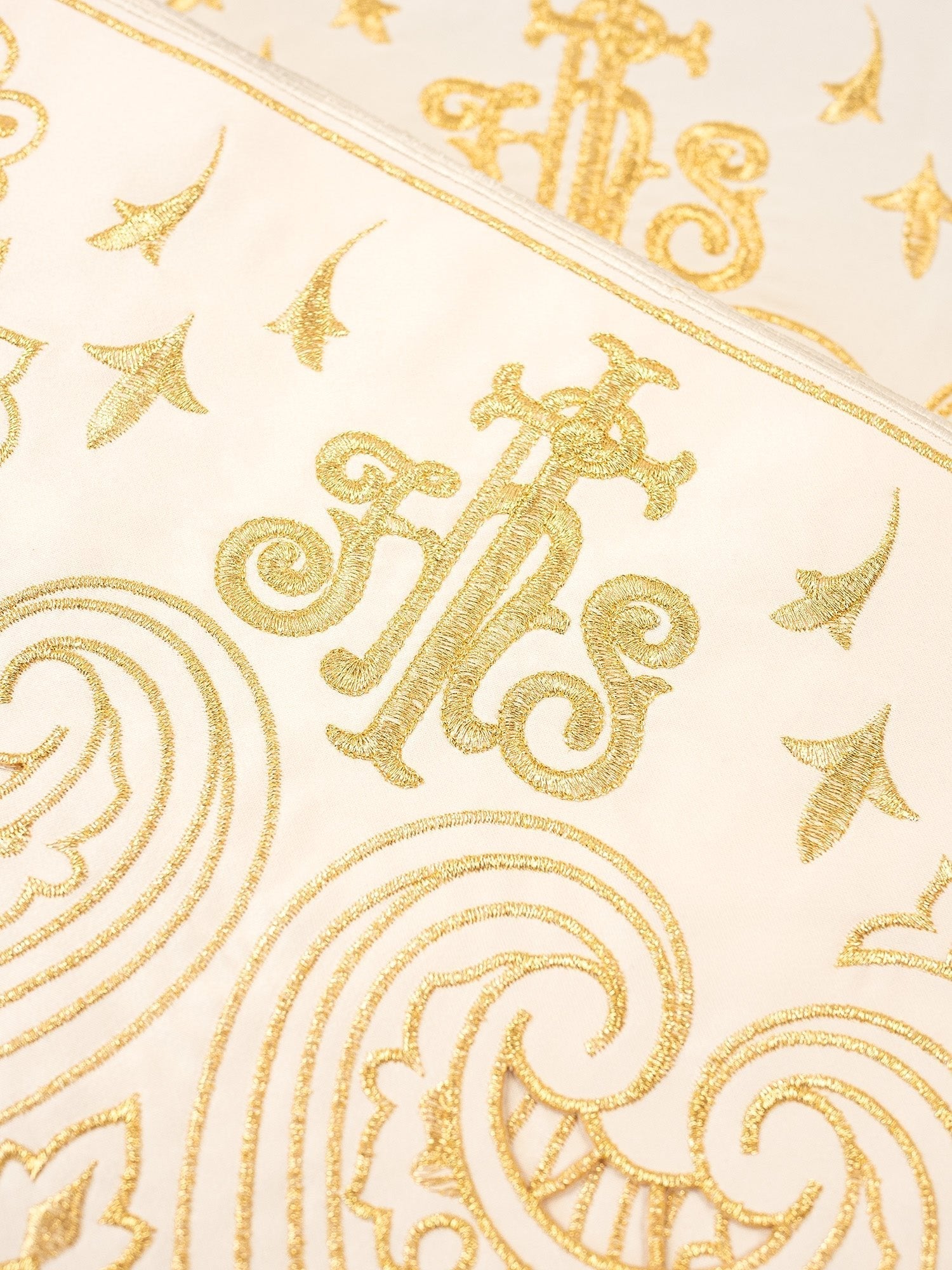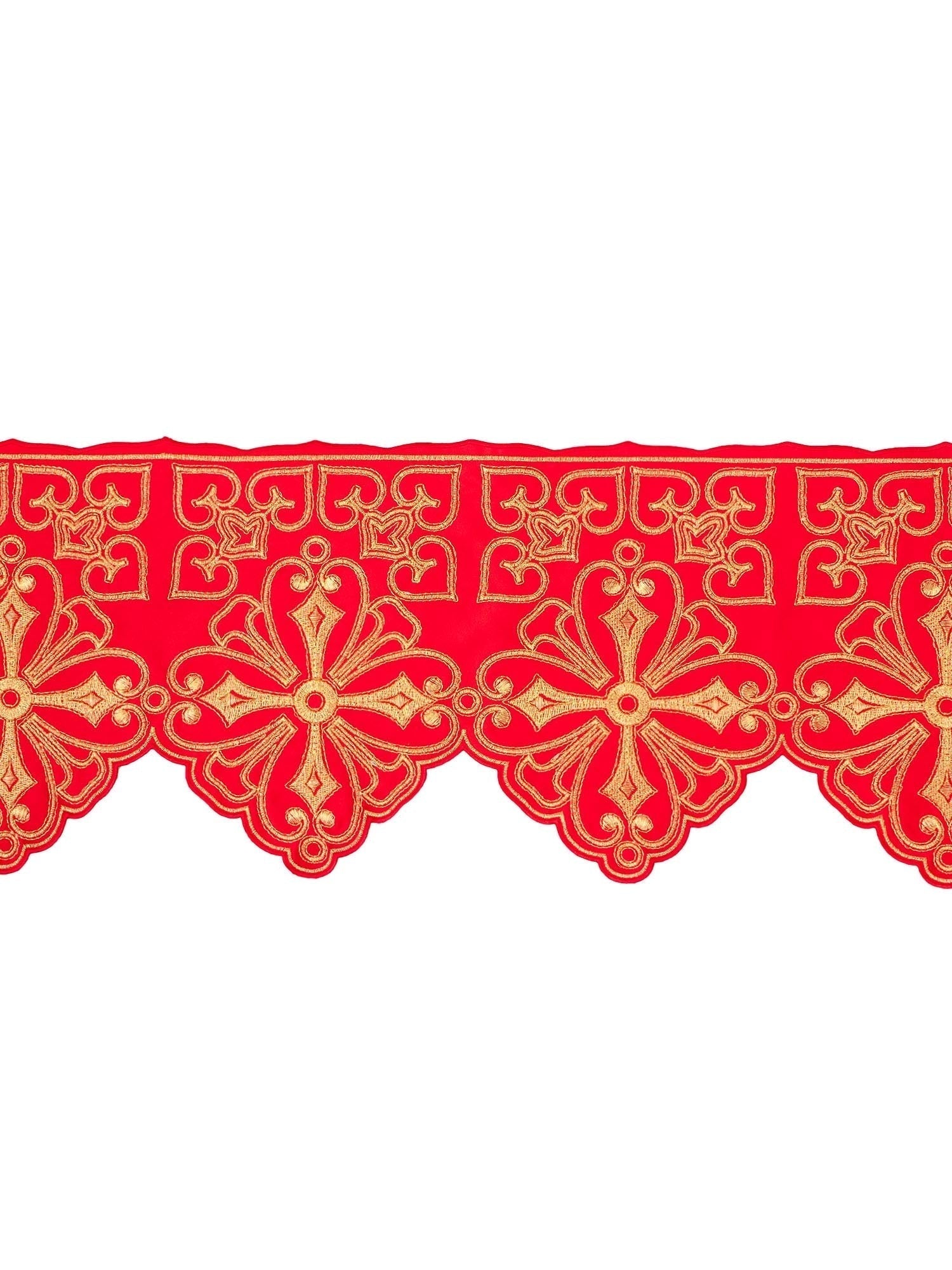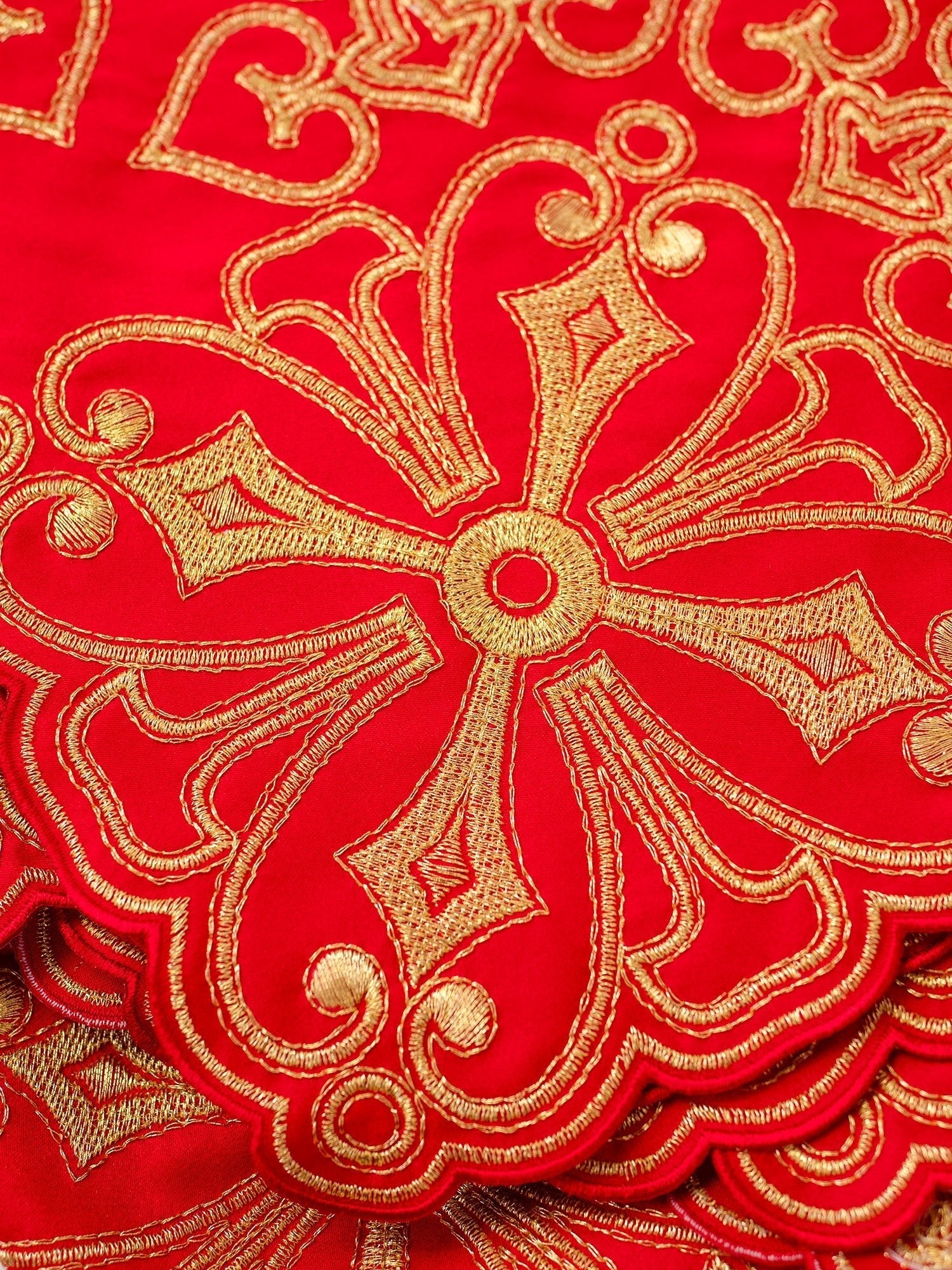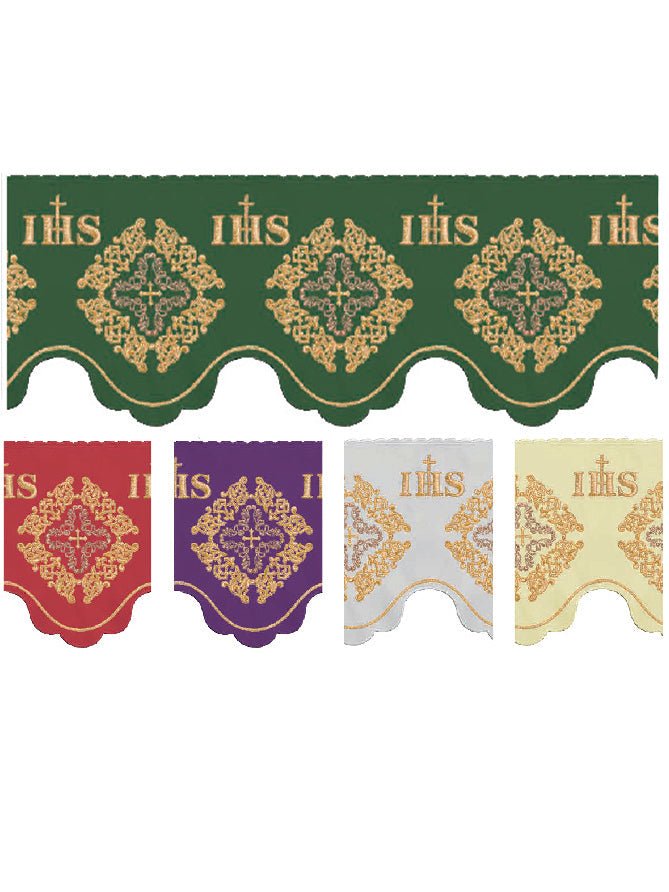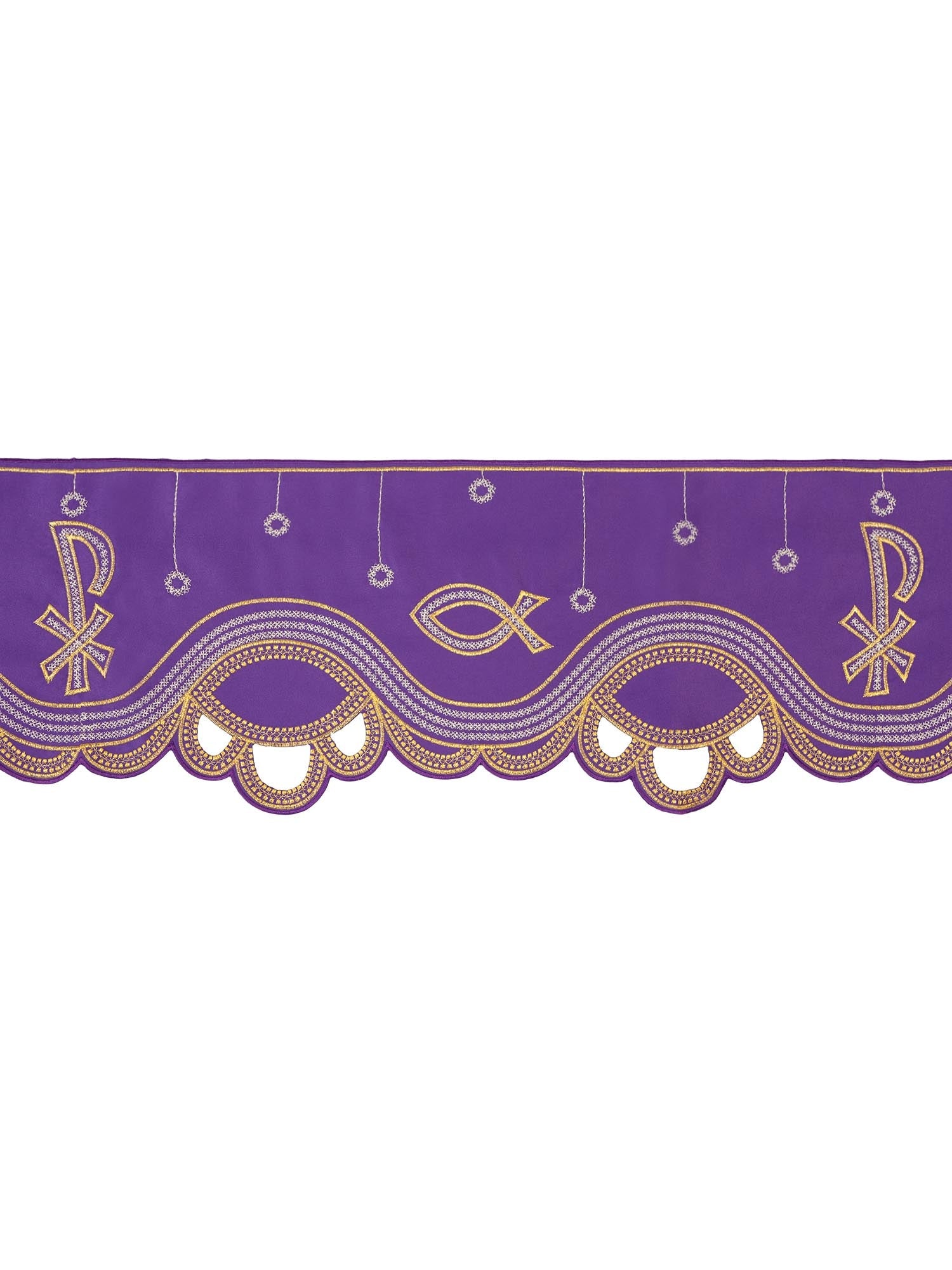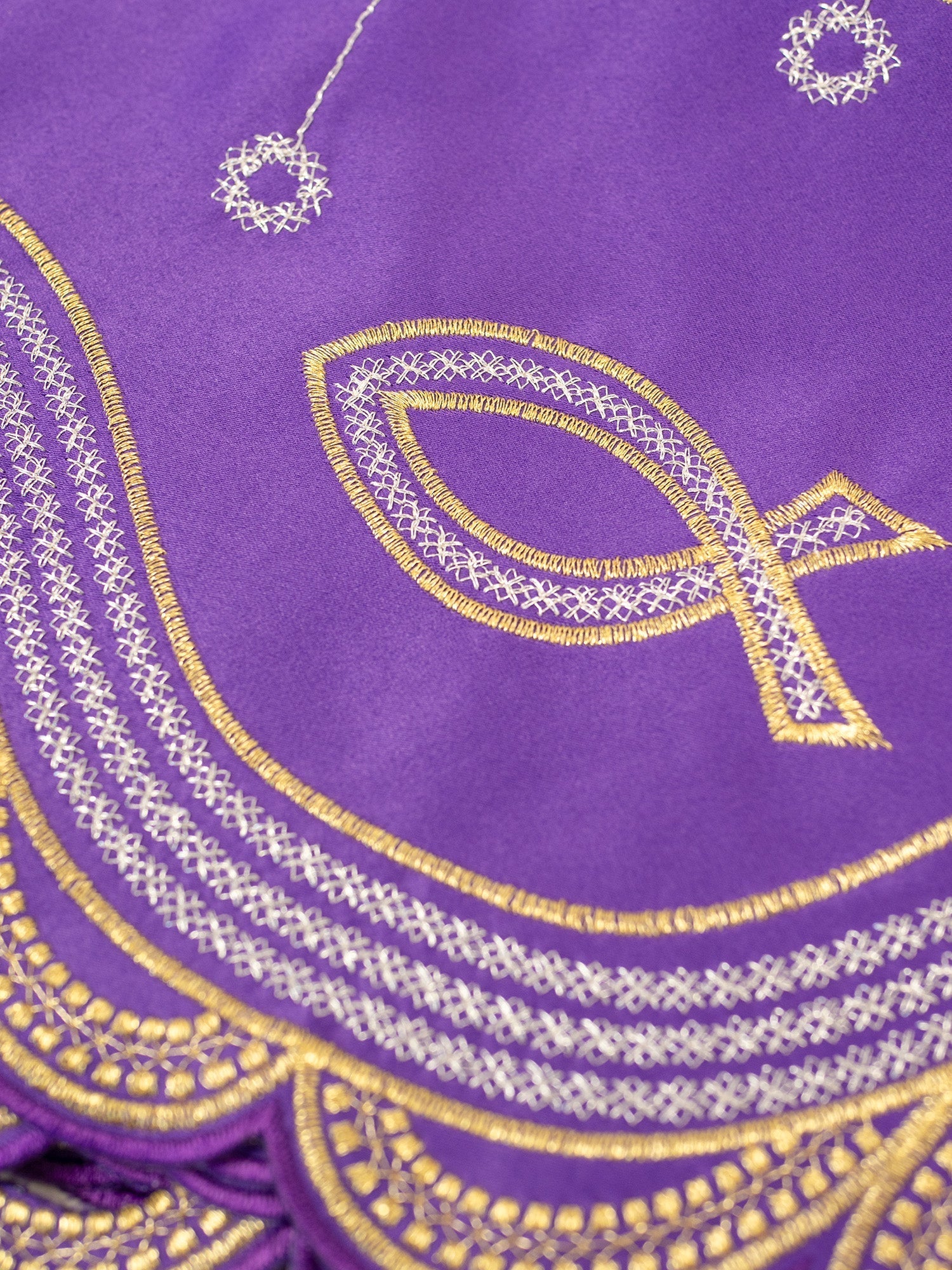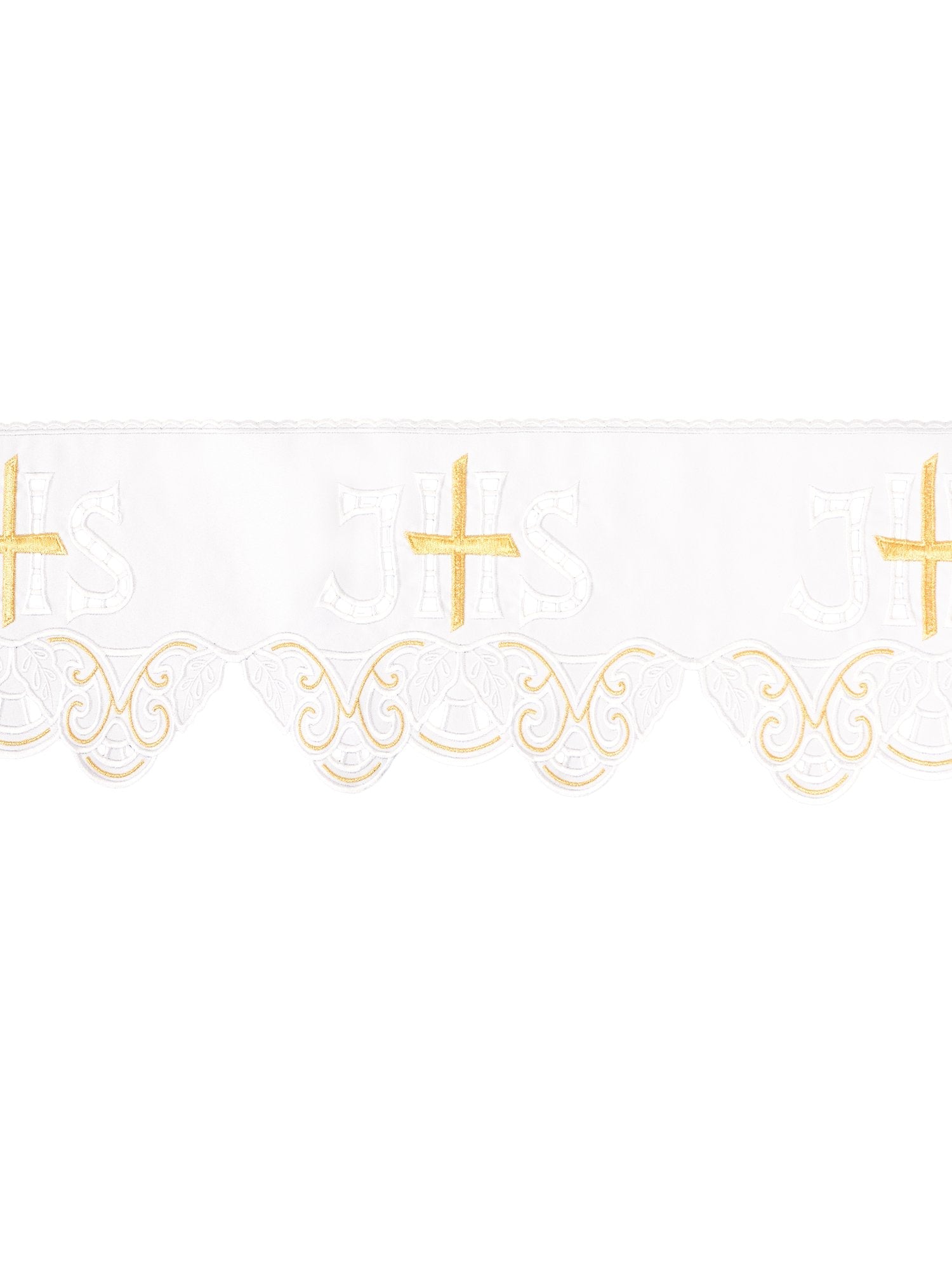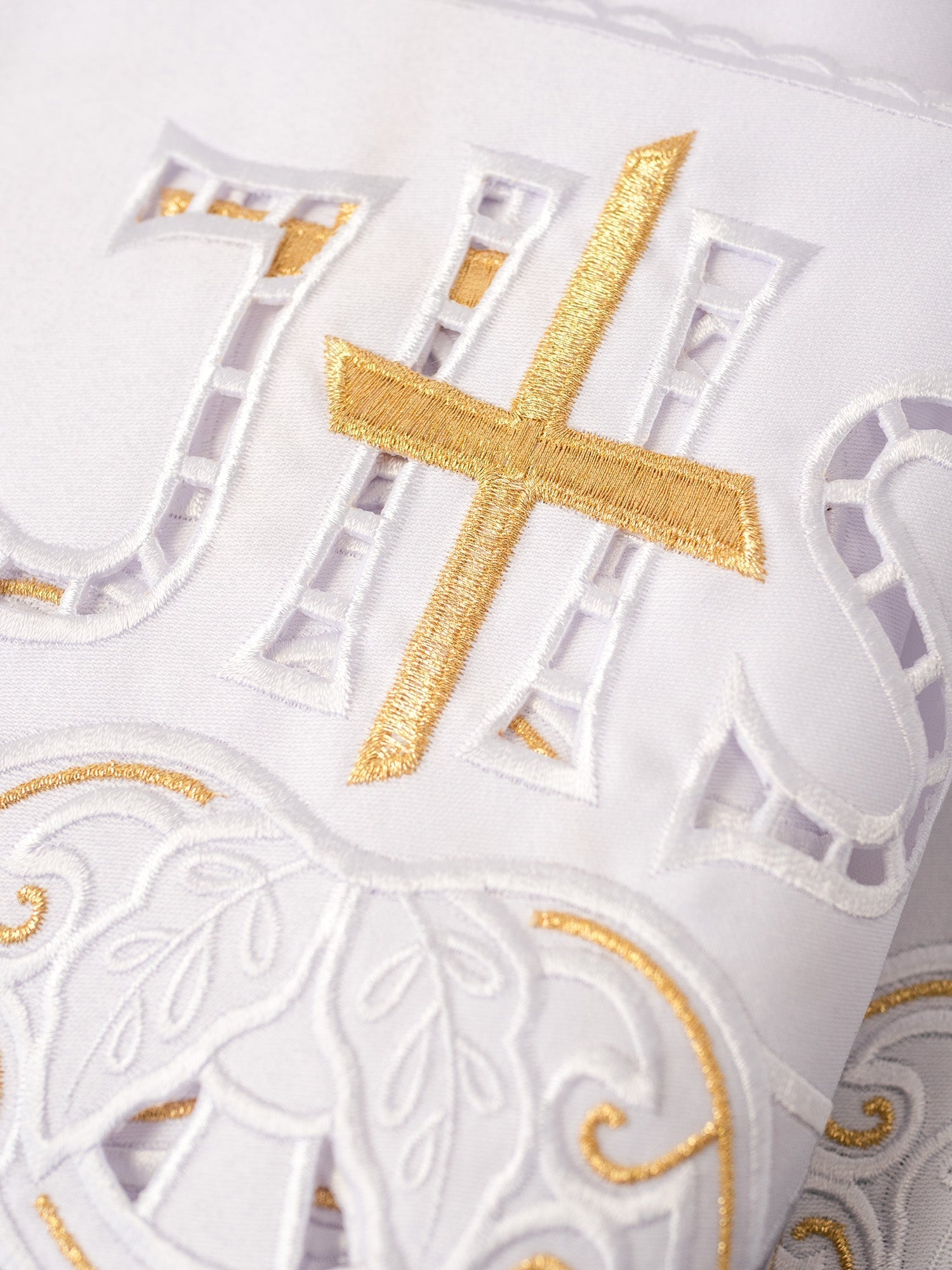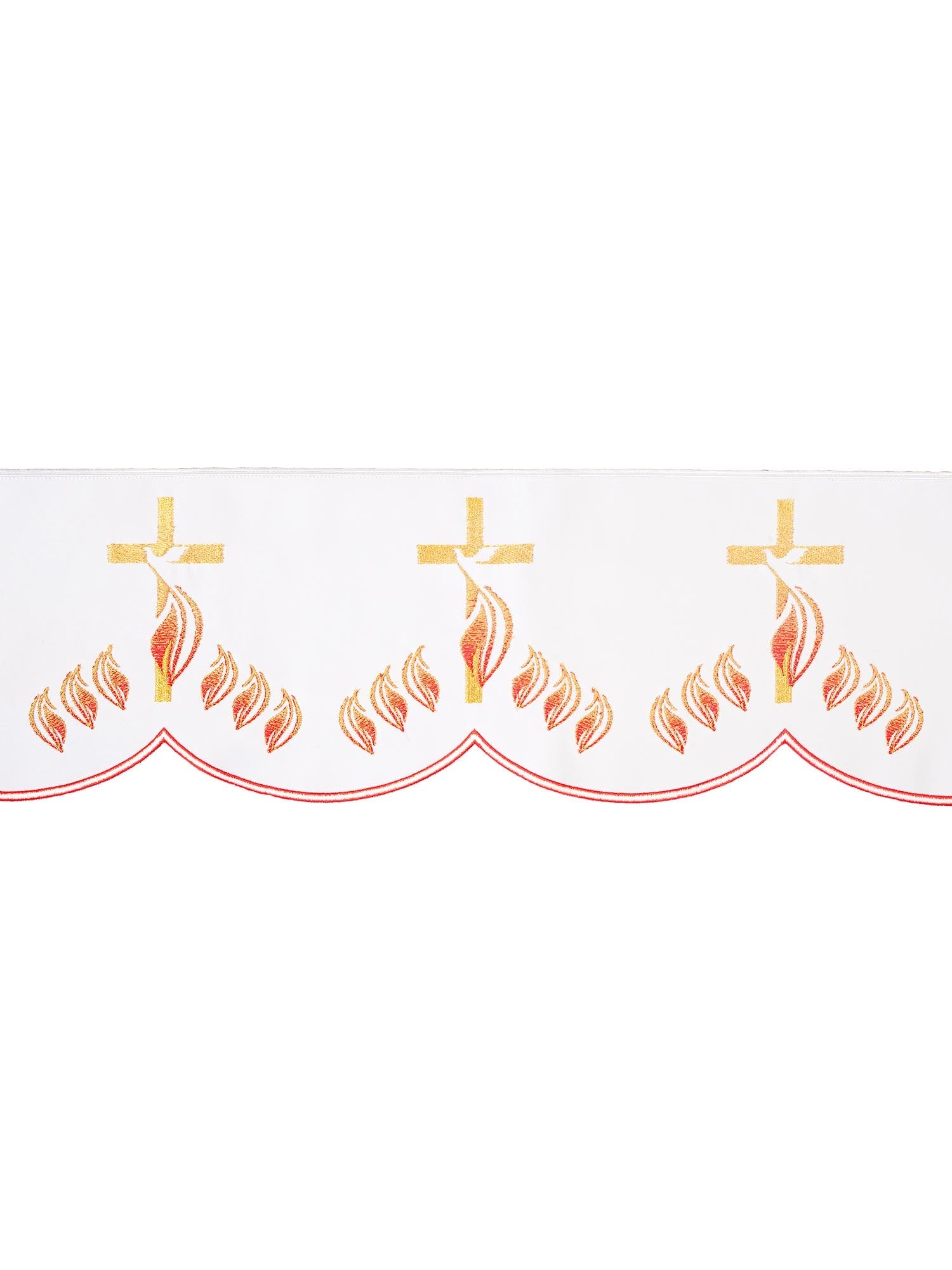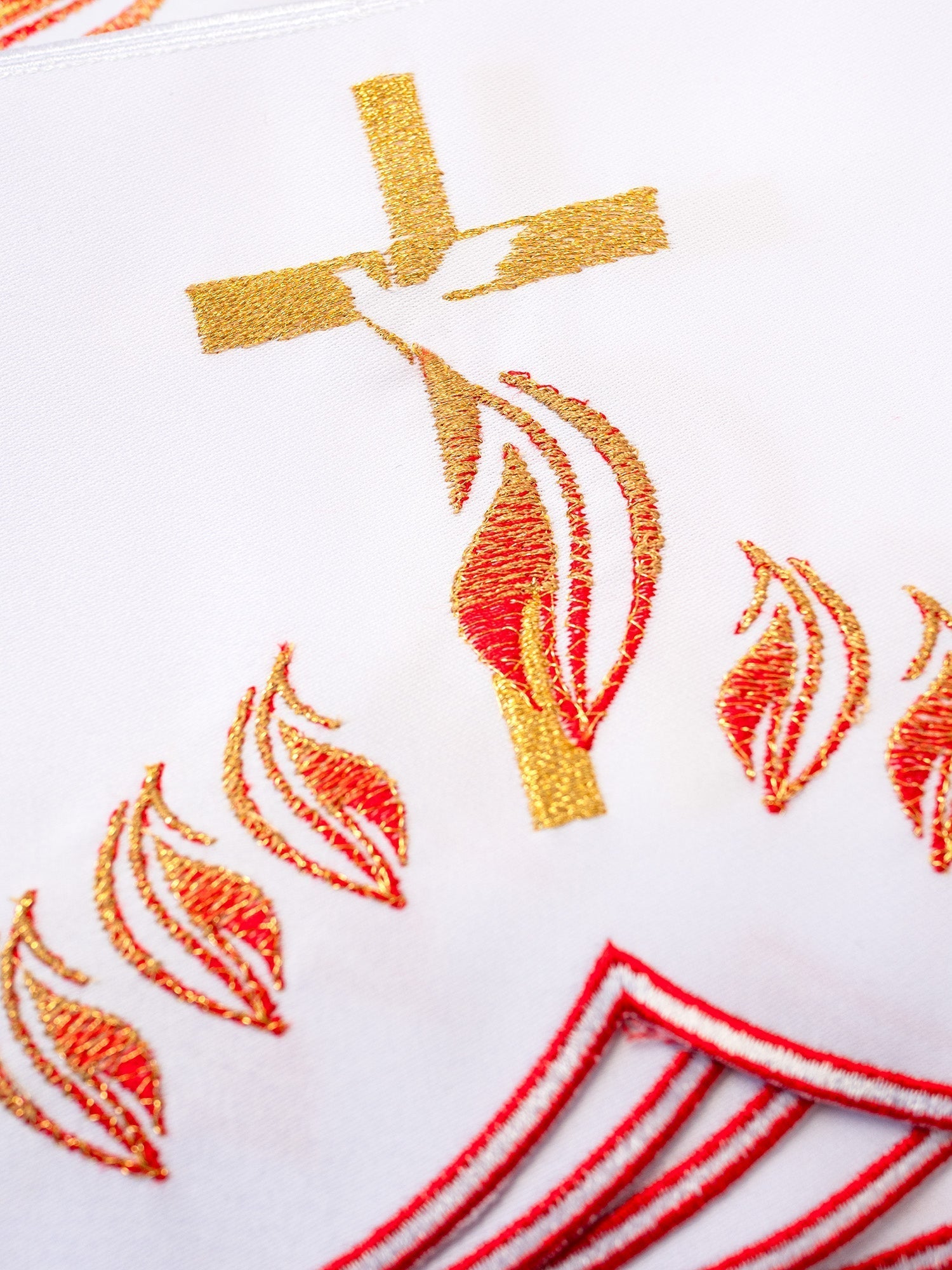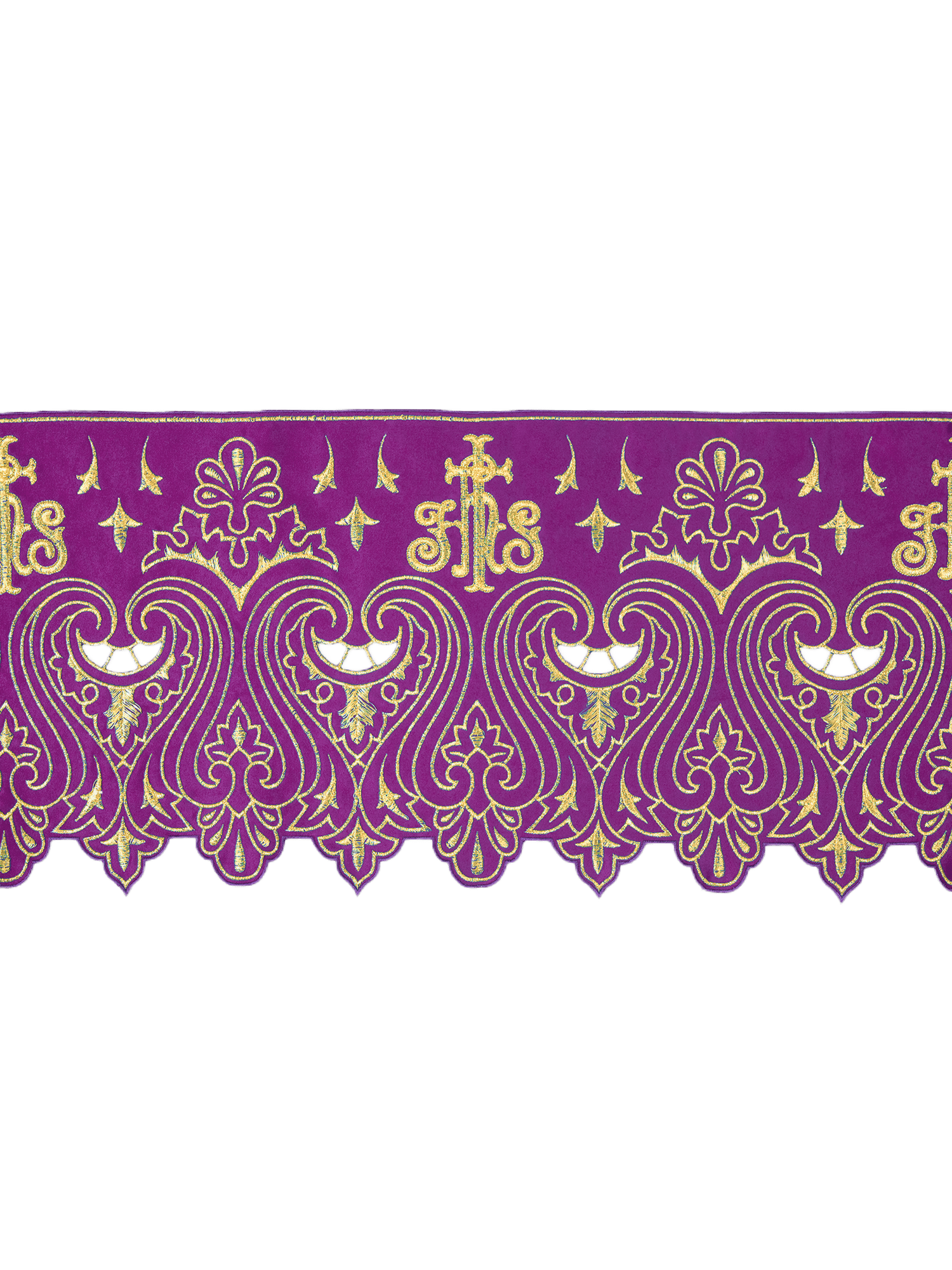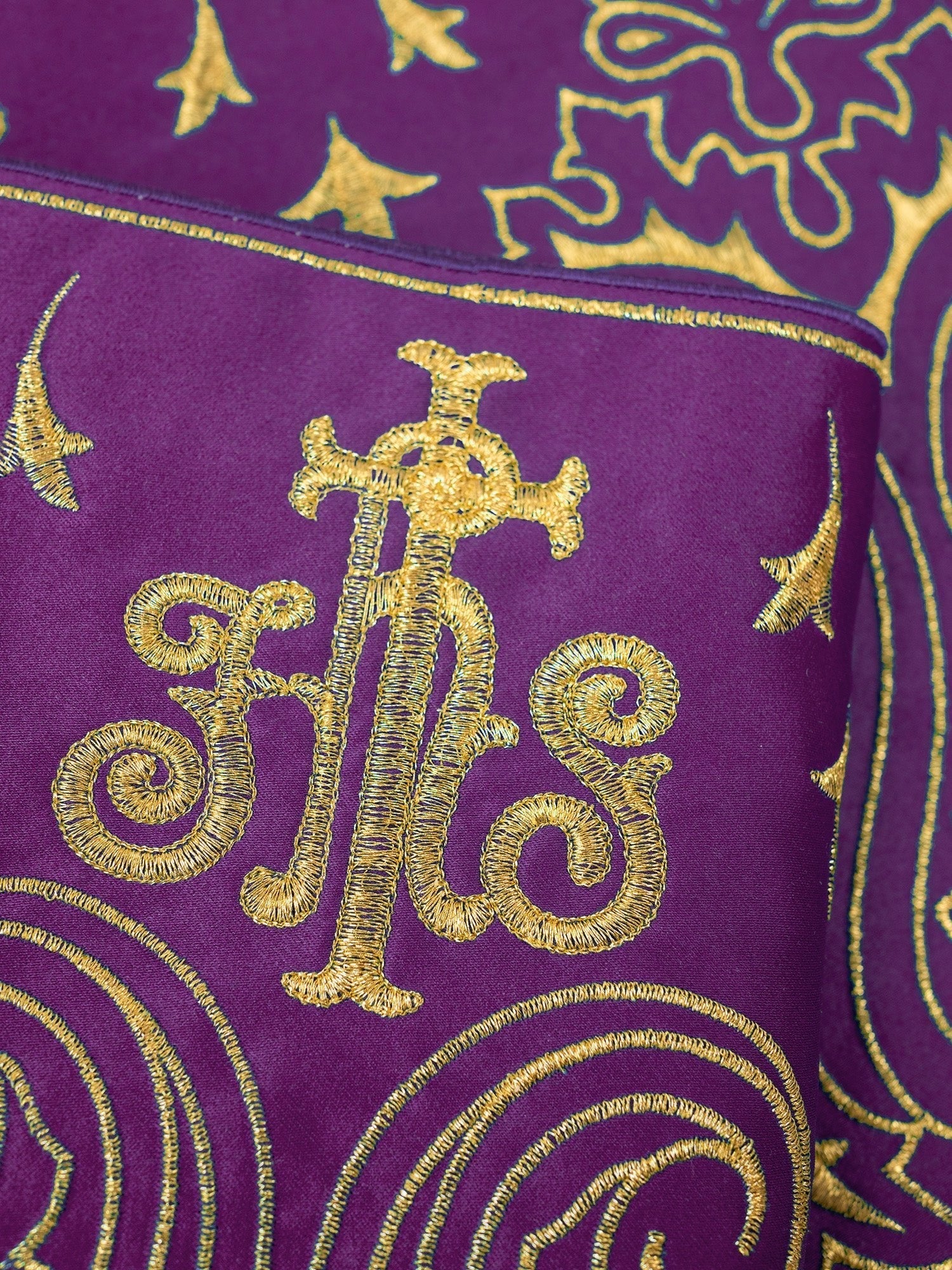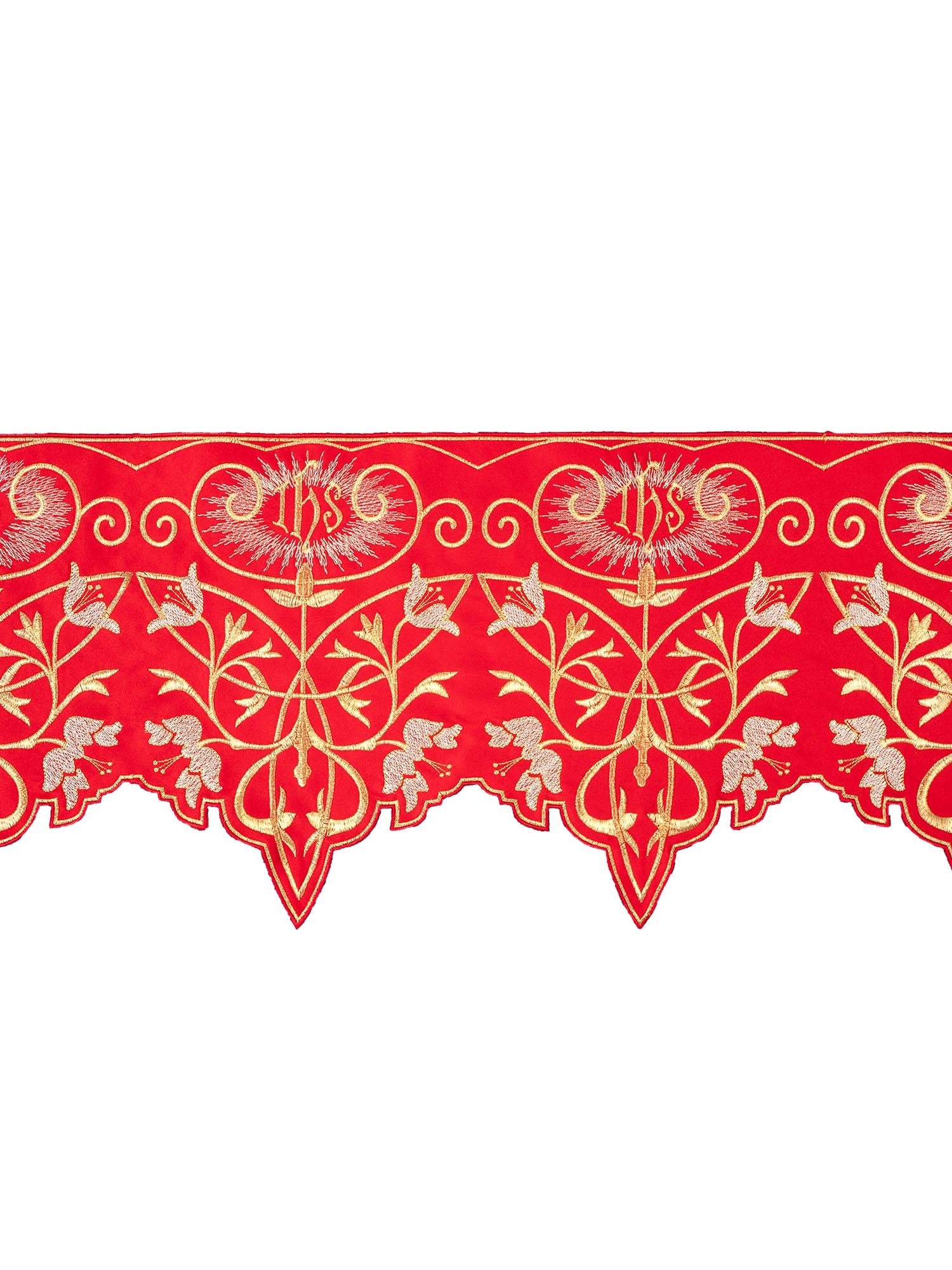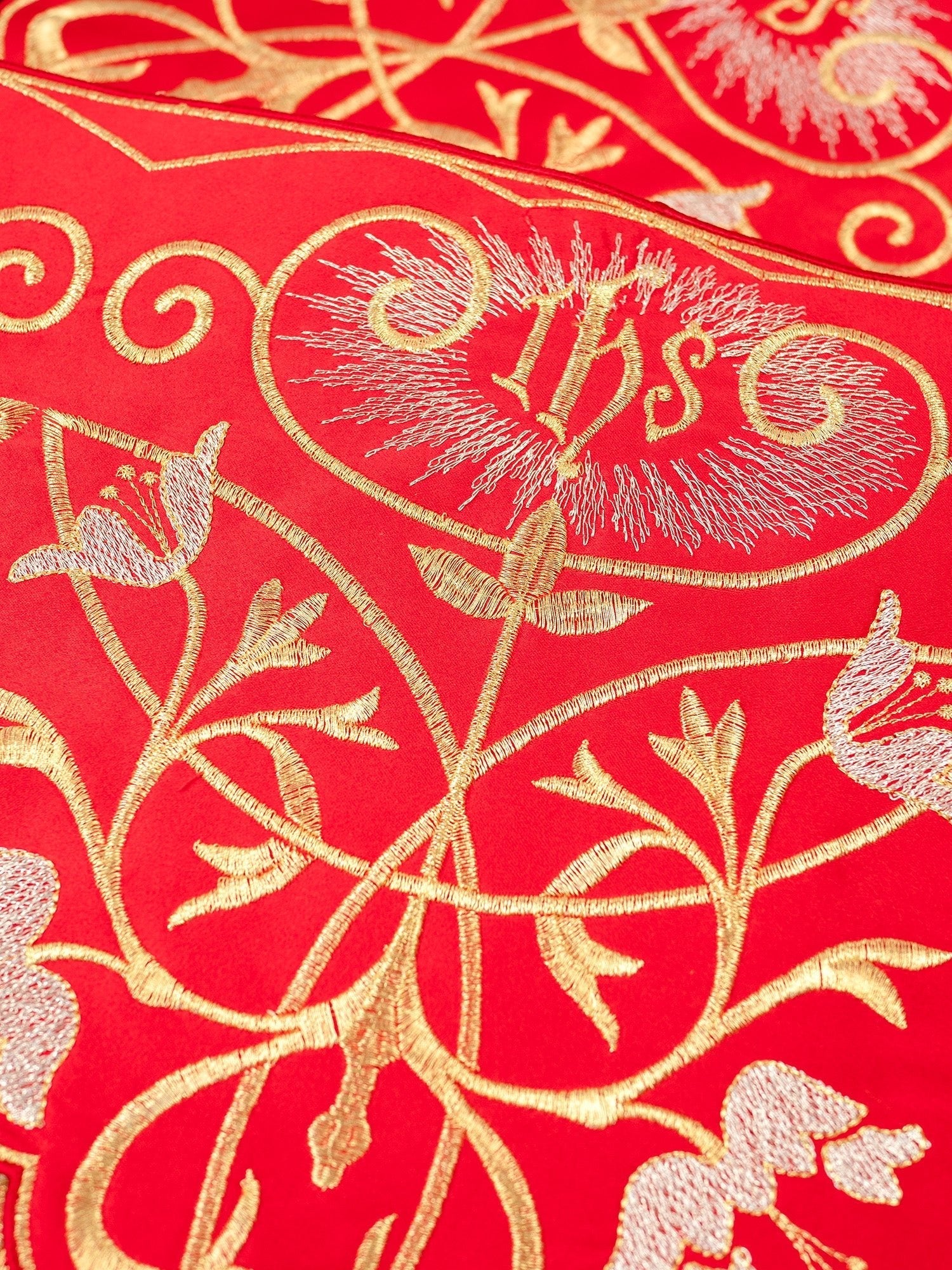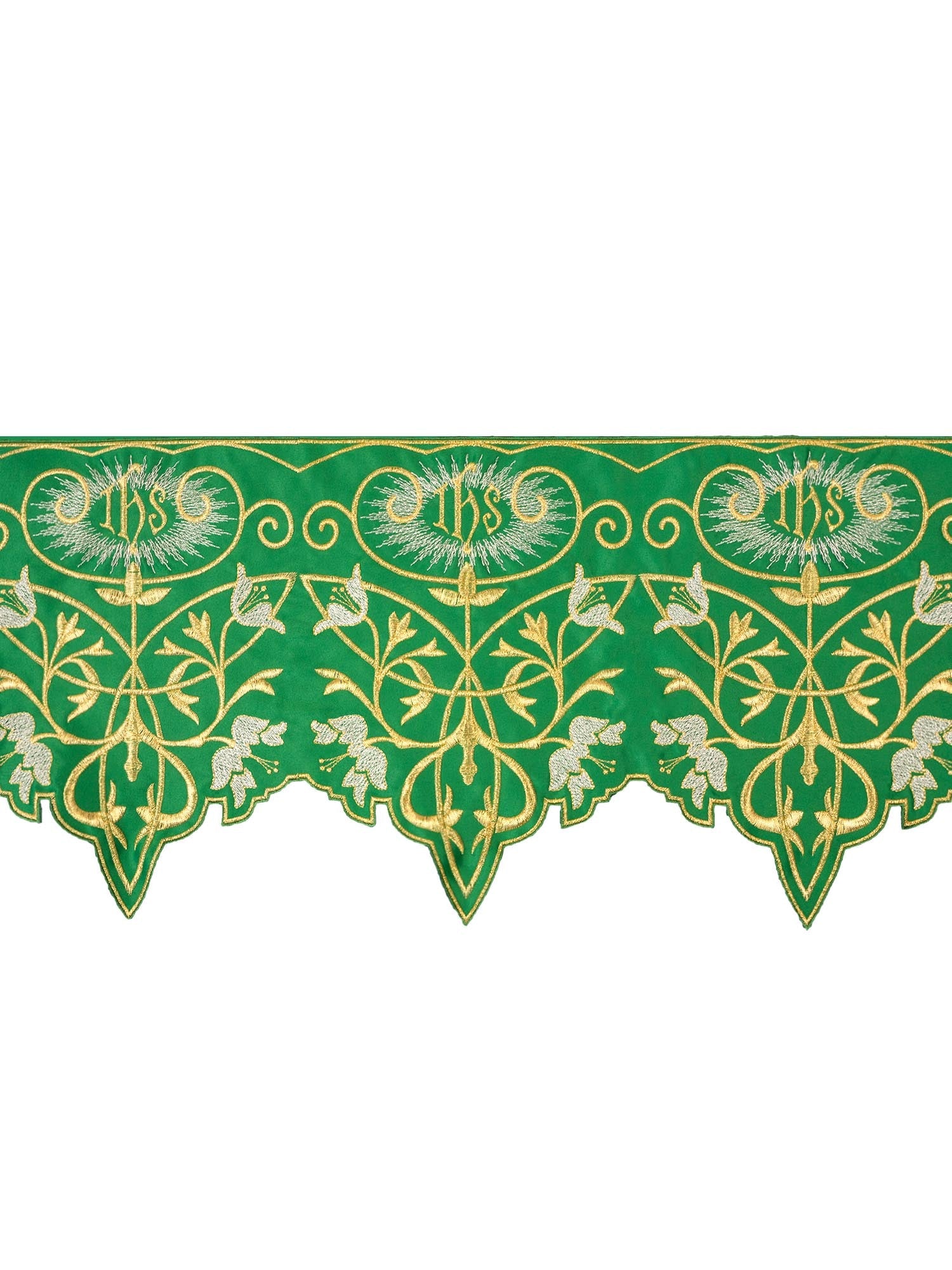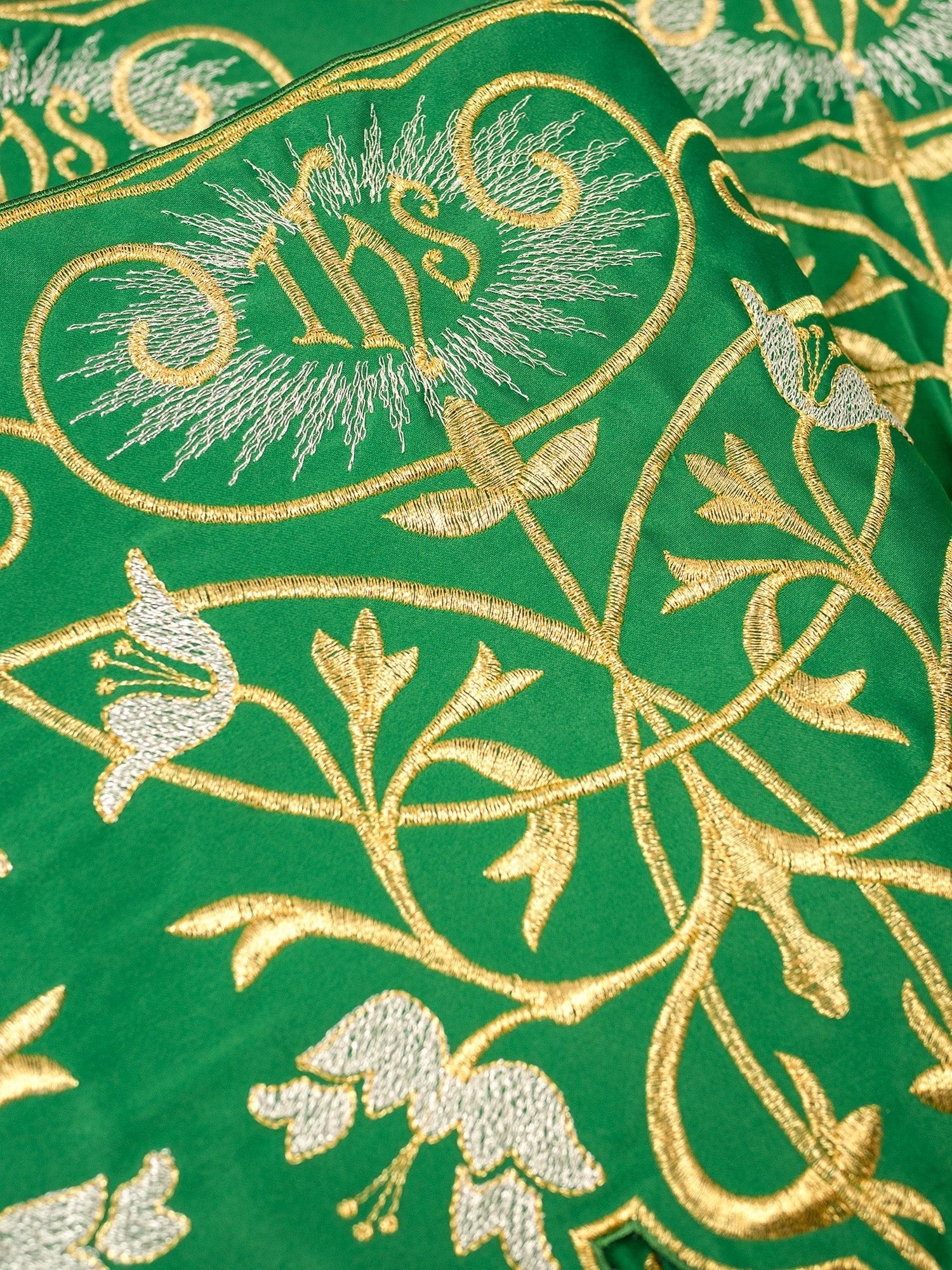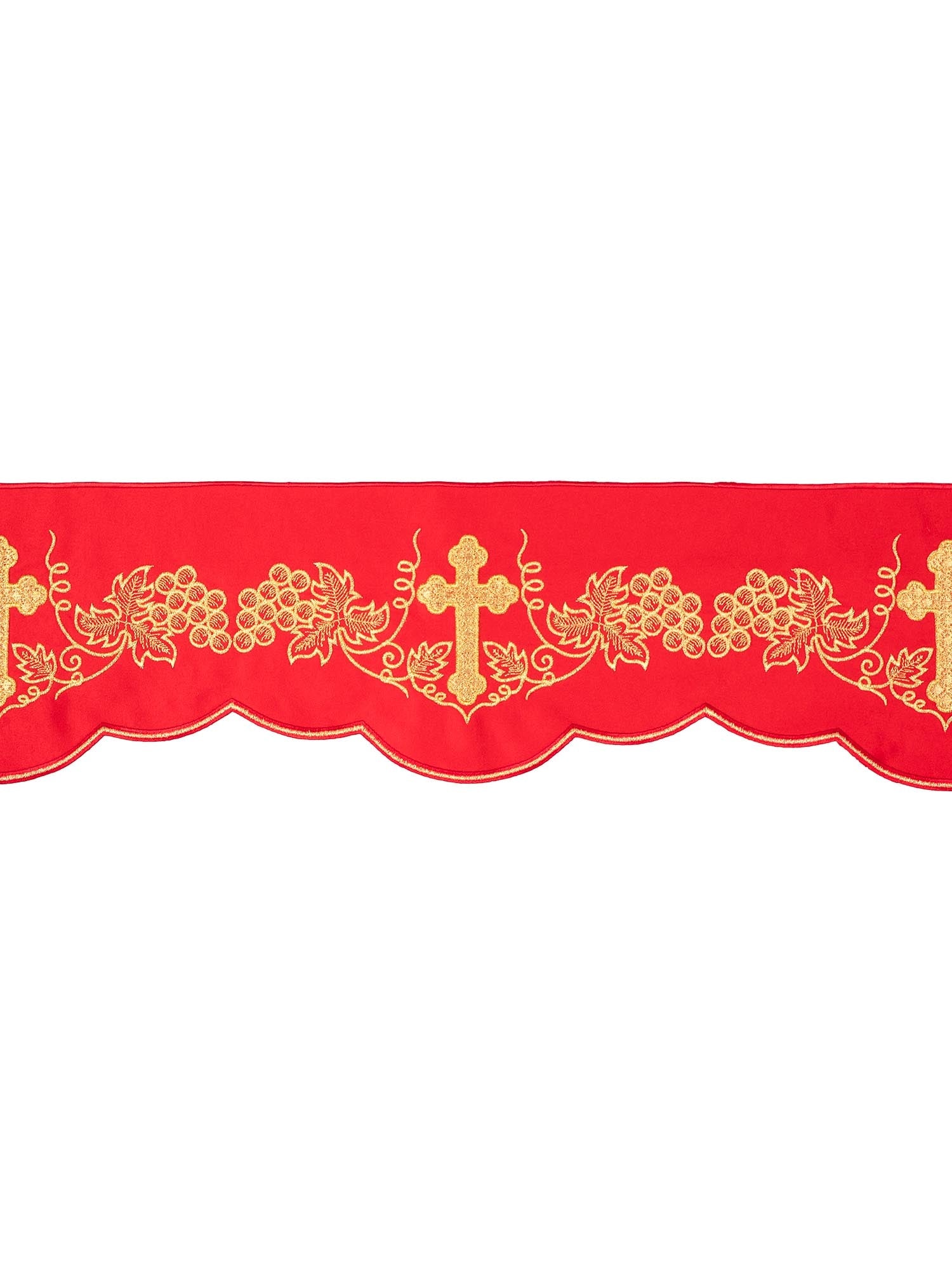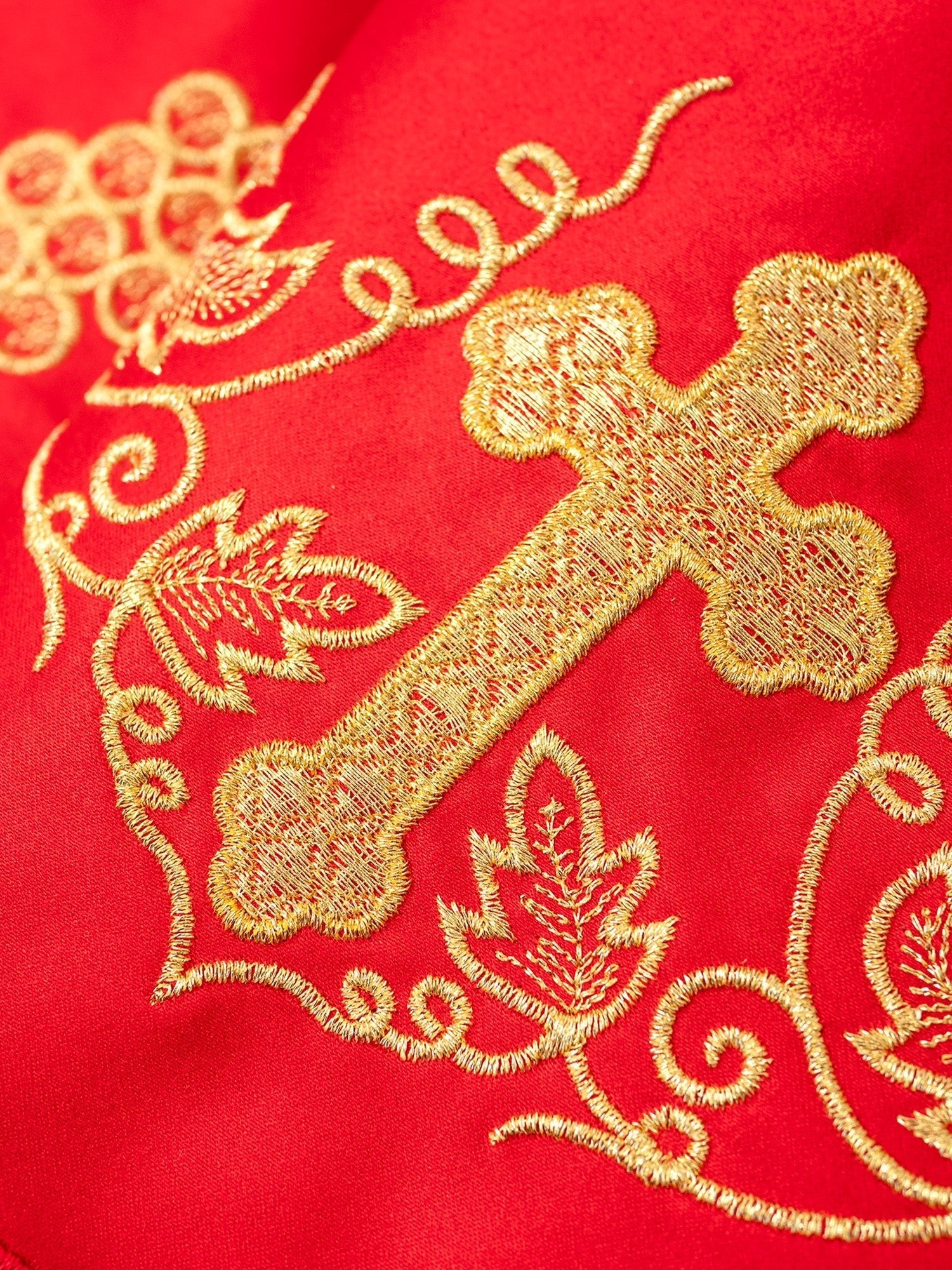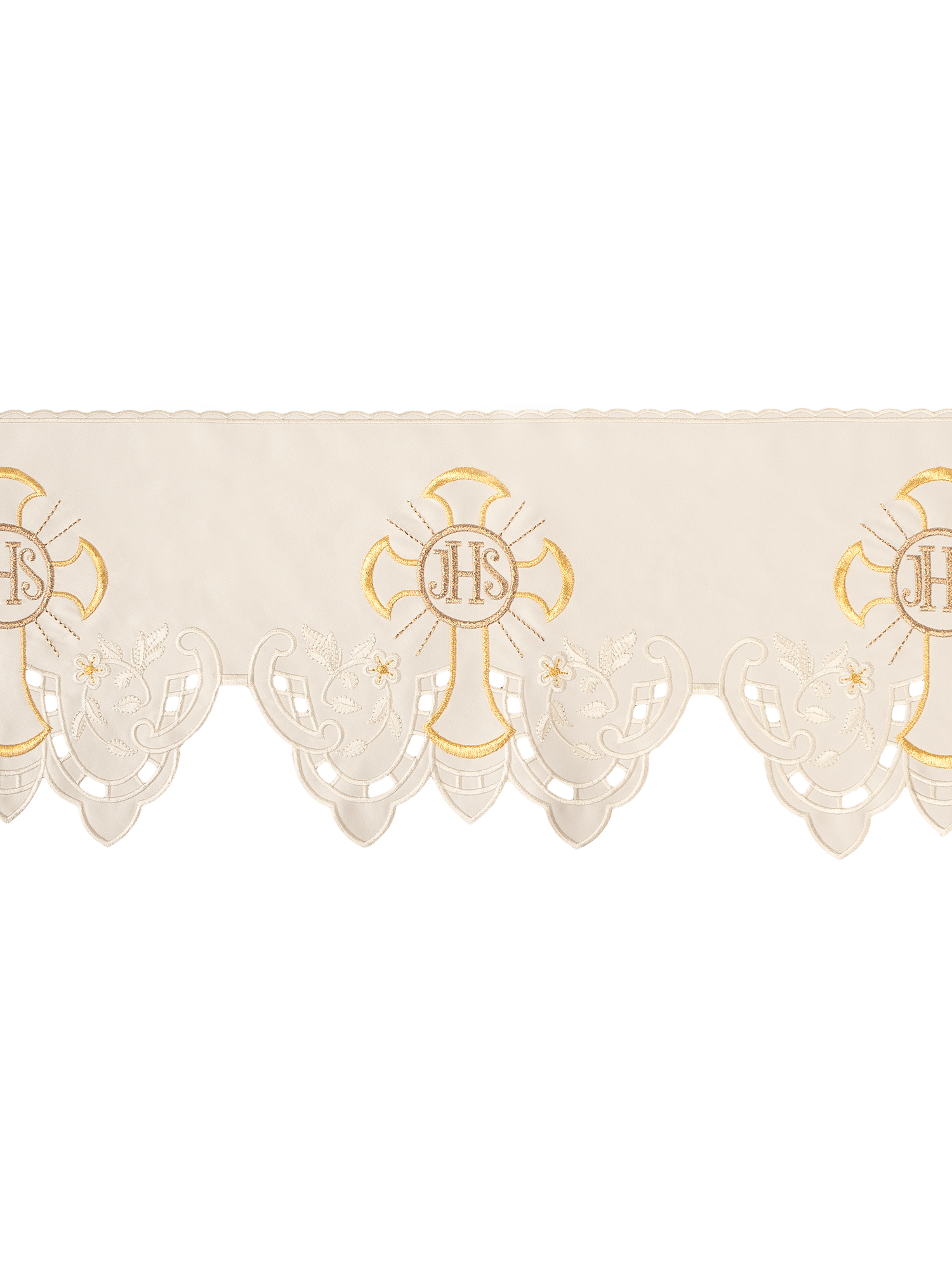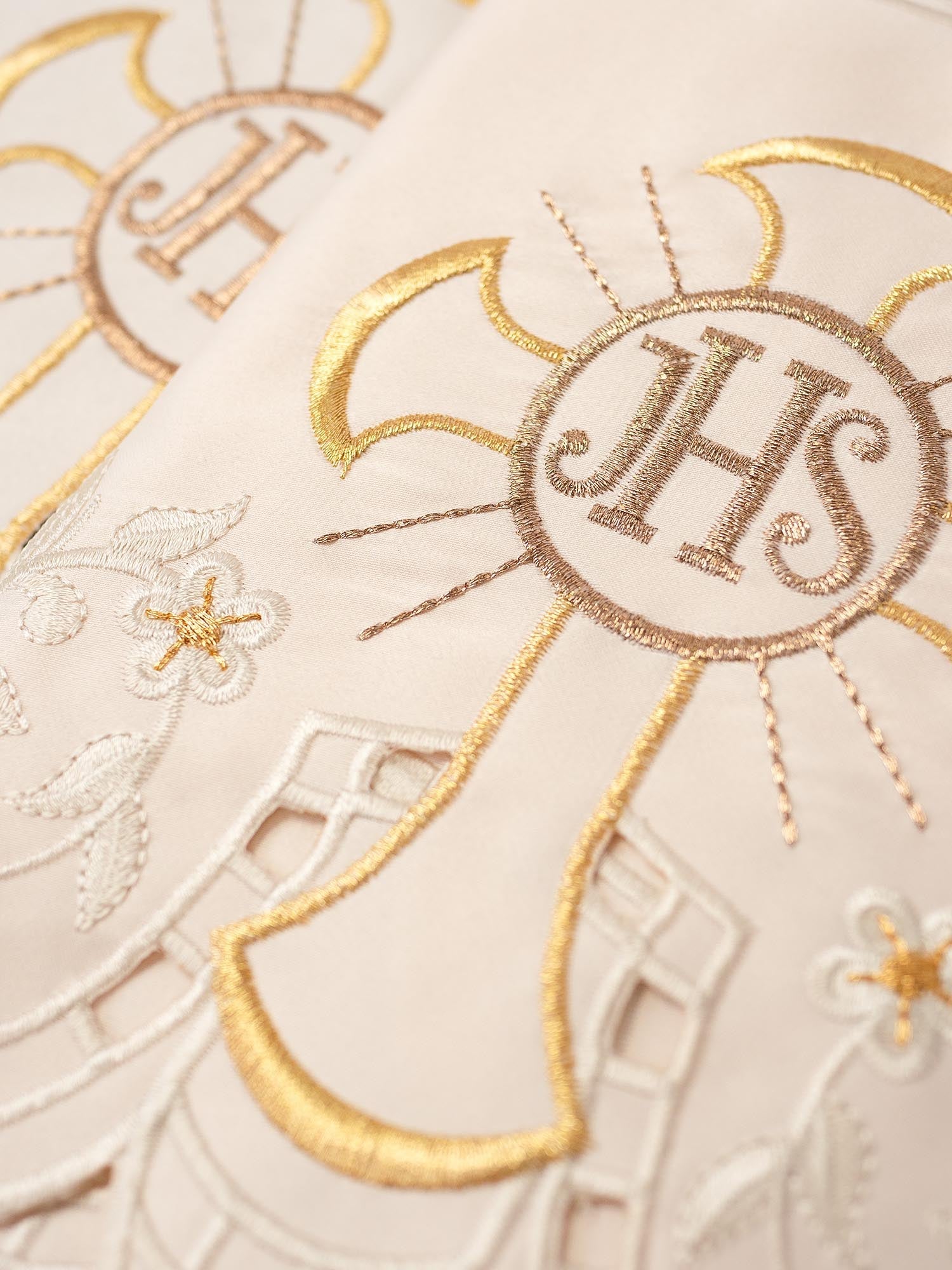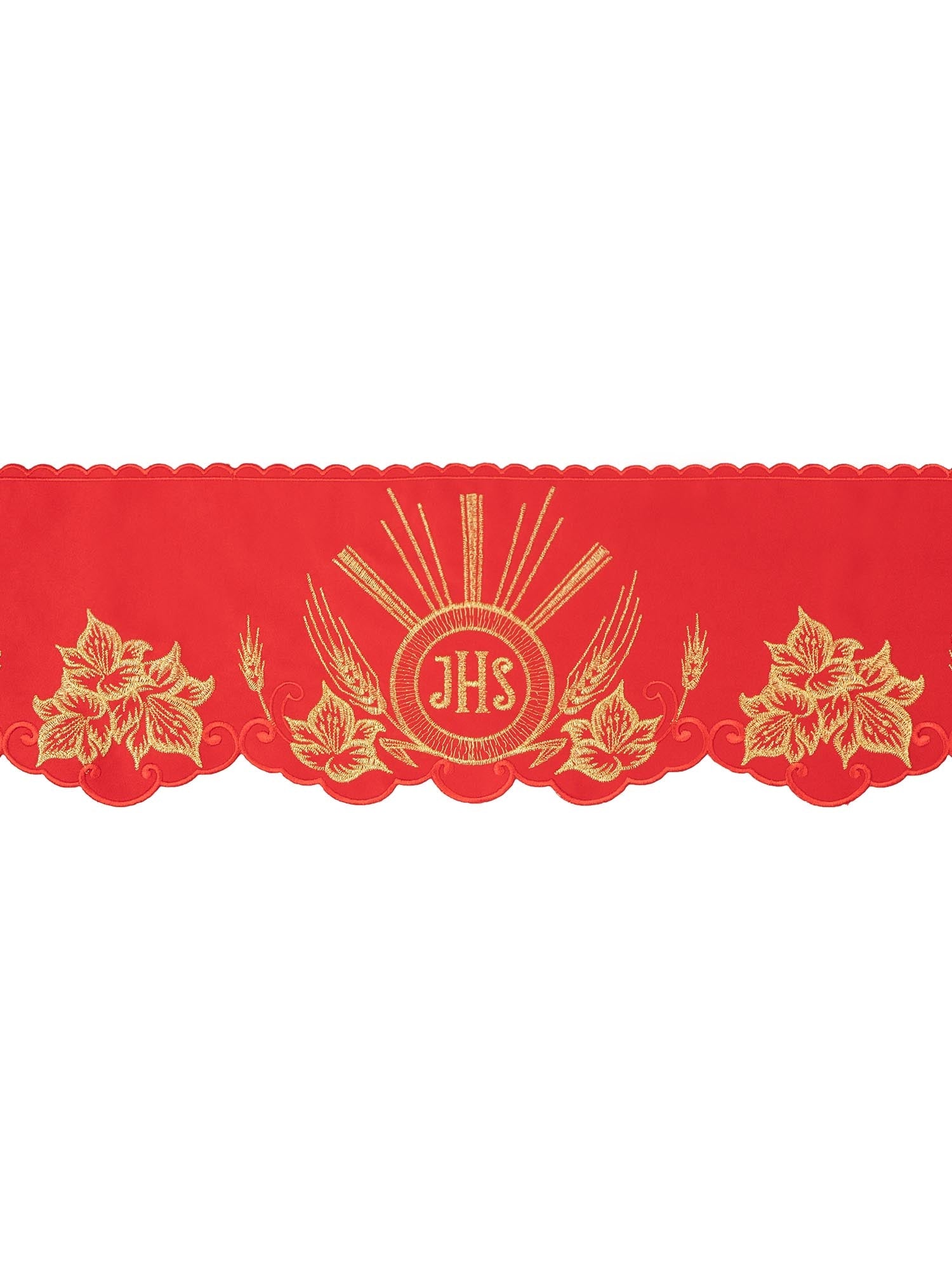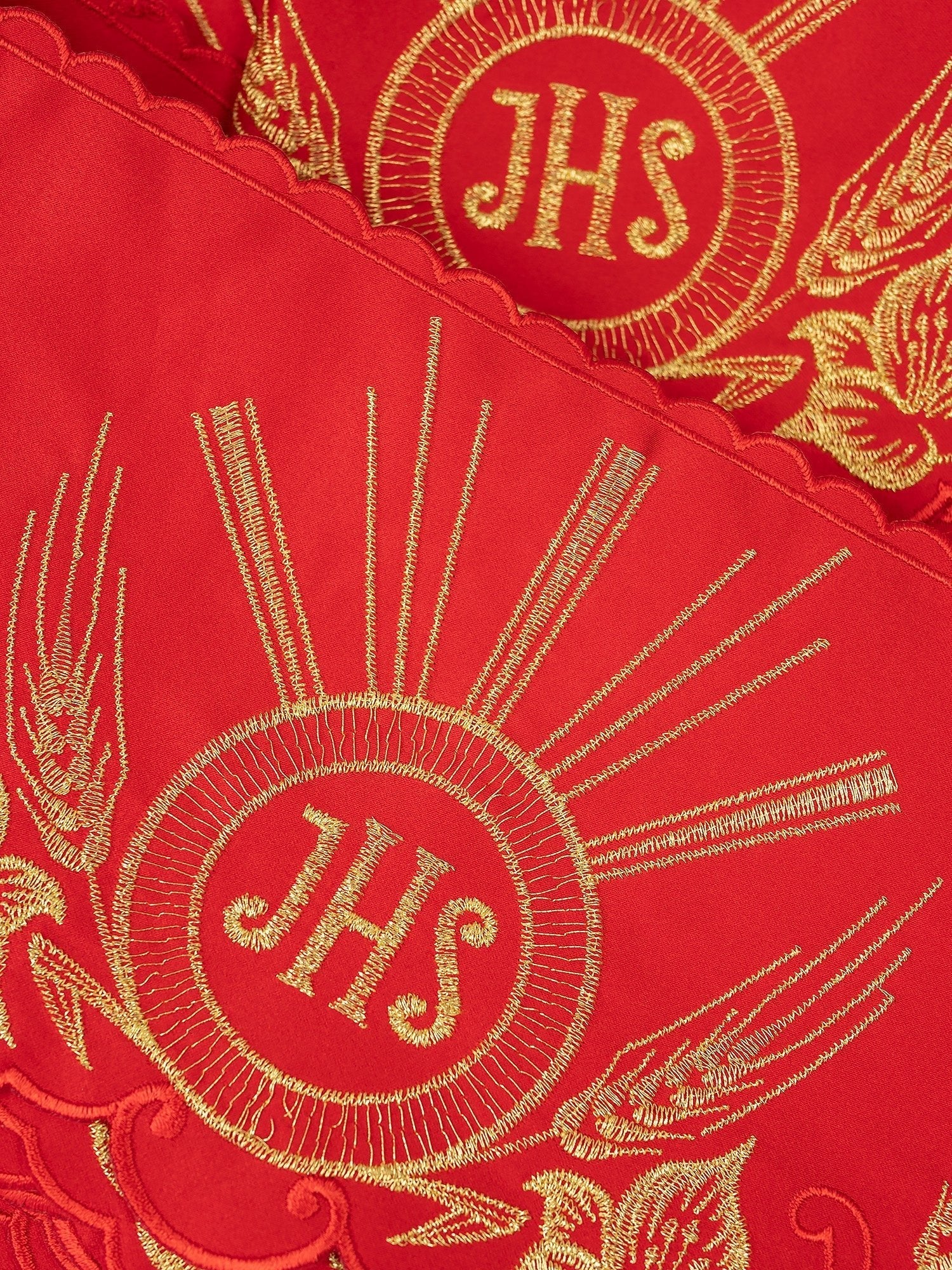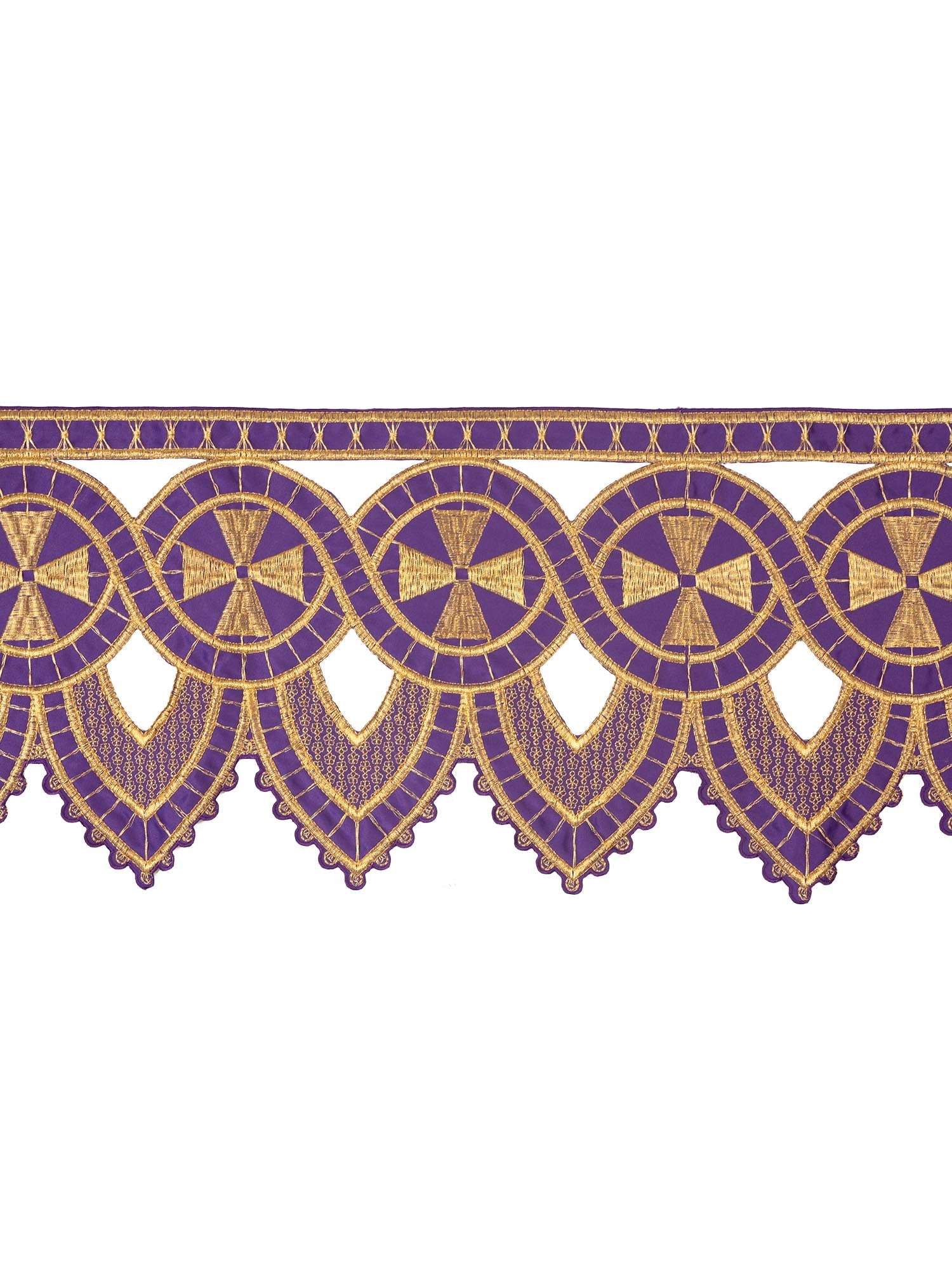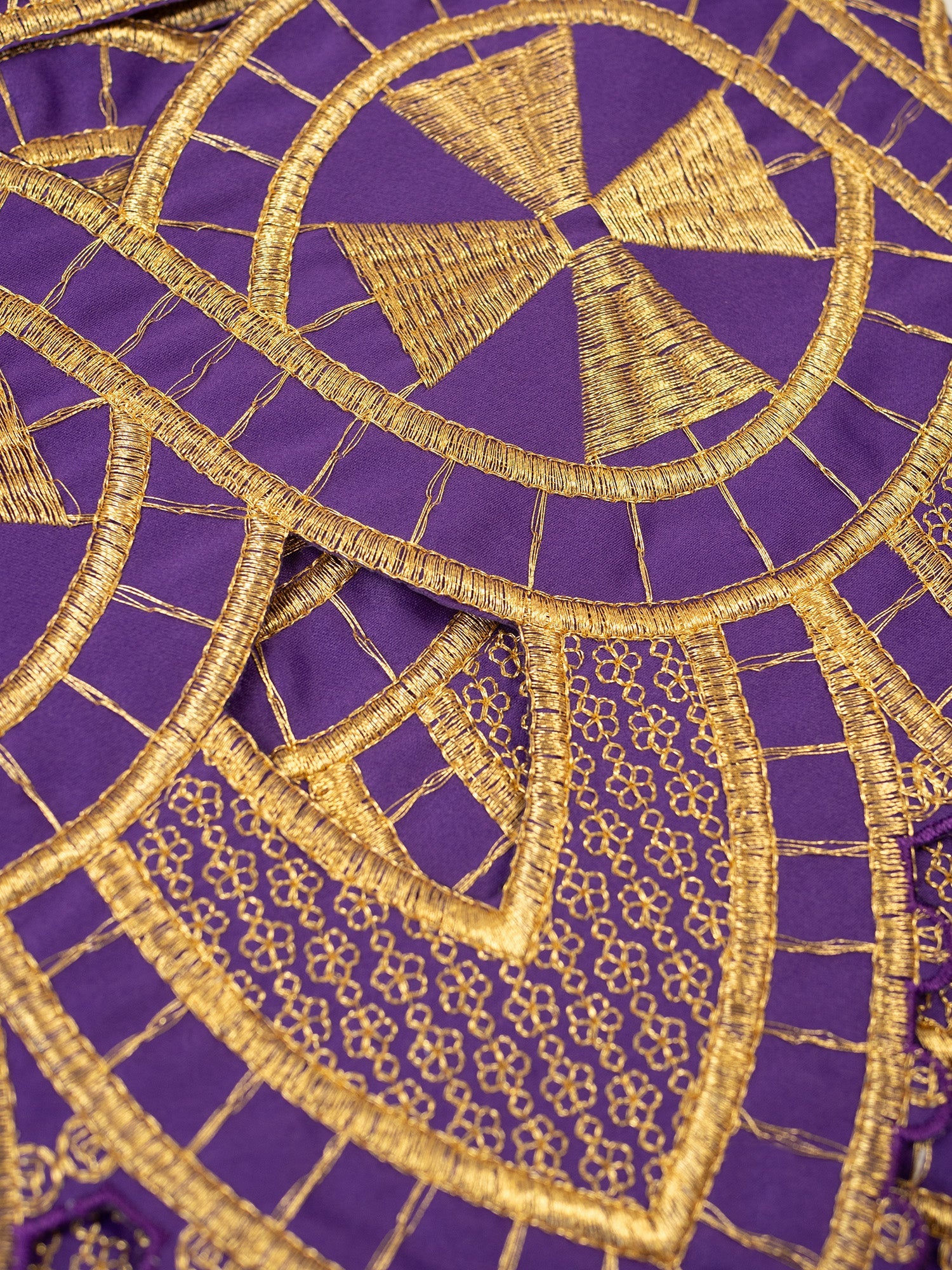Trimmings with front embroidery Rosette in violet
Sale priceFrom $144.95 USD
Regular price$207.08 USD
Violet altar superfrontal with embroidered Cross
Sale priceFrom $156.13 USD
Regular price$223.04 USD
Superfrontal with red Holy Spirit Dove embroidery
Sale priceFrom $144.95 USD
Regular price$207.08 USD
Purple altar superfrontal with gold IHS embroidery
Sale priceFrom $156.13 USD
Regular price$223.04 USD
Metre with front embroidery Cross ecru
Sale priceFrom $167.30 USD
Regular price$239.00 USD
Metric with front embroidery Red Cross
Sale priceFrom $167.30 USD
Regular price$239.00 USD
Ivory altar superfrontal with IHS and cross embroidery
Sale priceFrom $165.06 USD
Regular price$235.81 USD
Trimmings with front embroidery Cross with Flames in ecru
Sale priceFrom $133.78 USD
Regular price$191.12 USD
Altar trimmings with front embroidery IHS ecru
Sale priceFrom $174.00 USD
Regular price$248.57 USD
Trimmings with front embroidery Rosette in red
Sale priceFrom $144.95 USD
Regular price$207.08 USD
Trimmings with front embroidery IHS, Cross, and Rosette Violet
Sale priceFrom $156.13 USD
Regular price$223.04 USD
Trimmings with front embroidery PAX Violet
Sale priceFrom $144.95 USD
Regular price$207.08 USD
Trimmings with front embroidery IHS Cross White
Sale priceFrom $165.06 USD
Regular price$235.81 USD
Trimmings with front embroidery Cross with Flames in White
Sale priceFrom $133.78 USD
Regular price$191.12 USD
Trimmings with front embroidery IHS Violet
Sale priceFrom $174.00 USD
Regular price$248.57 USD
Altar superfrontal in red with gold IHS embroidery
Sale priceFrom $156.13 USD
Regular price$223.04 USD
Altar superfrontal in green with gold IHS embroidery
Sale priceFrom $156.13 USD
Regular price$223.04 USD
Superfrontal in red with Cross and Grapes embroidery
Sale priceFrom $118.14 USD
Regular price$168.77 USD
Metric with front embroidery IHS Cross ecru
Sale priceFrom $135.74 USD
Regular price$193.91 USD
Metric with front embroidery IHS Red
Sale priceFrom $115.91 USD
Regular price$165.58 USD
Metric with front embroidery Cross Purple
Sale priceFrom $127.77 USD
Regular price$182.52 USD

